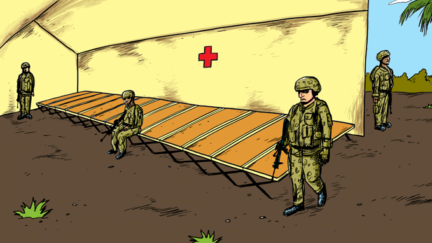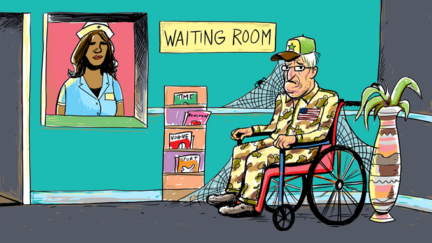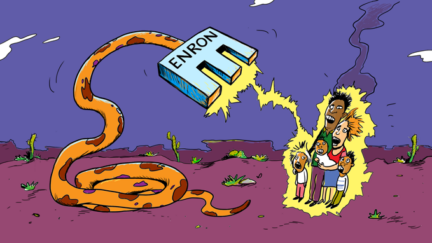- Privacy Policy

Home » Case Study – Methods, Examples and Guide

Case Study – Methods, Examples and Guide
Table of Contents

A case study is a research method that involves an in-depth examination and analysis of a particular phenomenon or case, such as an individual, organization, community, event, or situation.
It is a qualitative research approach that aims to provide a detailed and comprehensive understanding of the case being studied. Case studies typically involve multiple sources of data, including interviews, observations, documents, and artifacts, which are analyzed using various techniques, such as content analysis, thematic analysis, and grounded theory. The findings of a case study are often used to develop theories, inform policy or practice, or generate new research questions.
Types of Case Study
Types and Methods of Case Study are as follows:
Single-Case Study
A single-case study is an in-depth analysis of a single case. This type of case study is useful when the researcher wants to understand a specific phenomenon in detail.
For Example , A researcher might conduct a single-case study on a particular individual to understand their experiences with a particular health condition or a specific organization to explore their management practices. The researcher collects data from multiple sources, such as interviews, observations, and documents, and uses various techniques to analyze the data, such as content analysis or thematic analysis. The findings of a single-case study are often used to generate new research questions, develop theories, or inform policy or practice.
Multiple-Case Study
A multiple-case study involves the analysis of several cases that are similar in nature. This type of case study is useful when the researcher wants to identify similarities and differences between the cases.
For Example, a researcher might conduct a multiple-case study on several companies to explore the factors that contribute to their success or failure. The researcher collects data from each case, compares and contrasts the findings, and uses various techniques to analyze the data, such as comparative analysis or pattern-matching. The findings of a multiple-case study can be used to develop theories, inform policy or practice, or generate new research questions.
Exploratory Case Study
An exploratory case study is used to explore a new or understudied phenomenon. This type of case study is useful when the researcher wants to generate hypotheses or theories about the phenomenon.
For Example, a researcher might conduct an exploratory case study on a new technology to understand its potential impact on society. The researcher collects data from multiple sources, such as interviews, observations, and documents, and uses various techniques to analyze the data, such as grounded theory or content analysis. The findings of an exploratory case study can be used to generate new research questions, develop theories, or inform policy or practice.
Descriptive Case Study
A descriptive case study is used to describe a particular phenomenon in detail. This type of case study is useful when the researcher wants to provide a comprehensive account of the phenomenon.
For Example, a researcher might conduct a descriptive case study on a particular community to understand its social and economic characteristics. The researcher collects data from multiple sources, such as interviews, observations, and documents, and uses various techniques to analyze the data, such as content analysis or thematic analysis. The findings of a descriptive case study can be used to inform policy or practice or generate new research questions.
Instrumental Case Study
An instrumental case study is used to understand a particular phenomenon that is instrumental in achieving a particular goal. This type of case study is useful when the researcher wants to understand the role of the phenomenon in achieving the goal.
For Example, a researcher might conduct an instrumental case study on a particular policy to understand its impact on achieving a particular goal, such as reducing poverty. The researcher collects data from multiple sources, such as interviews, observations, and documents, and uses various techniques to analyze the data, such as content analysis or thematic analysis. The findings of an instrumental case study can be used to inform policy or practice or generate new research questions.
Case Study Data Collection Methods
Here are some common data collection methods for case studies:
Interviews involve asking questions to individuals who have knowledge or experience relevant to the case study. Interviews can be structured (where the same questions are asked to all participants) or unstructured (where the interviewer follows up on the responses with further questions). Interviews can be conducted in person, over the phone, or through video conferencing.
Observations
Observations involve watching and recording the behavior and activities of individuals or groups relevant to the case study. Observations can be participant (where the researcher actively participates in the activities) or non-participant (where the researcher observes from a distance). Observations can be recorded using notes, audio or video recordings, or photographs.
Documents can be used as a source of information for case studies. Documents can include reports, memos, emails, letters, and other written materials related to the case study. Documents can be collected from the case study participants or from public sources.
Surveys involve asking a set of questions to a sample of individuals relevant to the case study. Surveys can be administered in person, over the phone, through mail or email, or online. Surveys can be used to gather information on attitudes, opinions, or behaviors related to the case study.
Artifacts are physical objects relevant to the case study. Artifacts can include tools, equipment, products, or other objects that provide insights into the case study phenomenon.
How to conduct Case Study Research
Conducting a case study research involves several steps that need to be followed to ensure the quality and rigor of the study. Here are the steps to conduct case study research:
- Define the research questions: The first step in conducting a case study research is to define the research questions. The research questions should be specific, measurable, and relevant to the case study phenomenon under investigation.
- Select the case: The next step is to select the case or cases to be studied. The case should be relevant to the research questions and should provide rich and diverse data that can be used to answer the research questions.
- Collect data: Data can be collected using various methods, such as interviews, observations, documents, surveys, and artifacts. The data collection method should be selected based on the research questions and the nature of the case study phenomenon.
- Analyze the data: The data collected from the case study should be analyzed using various techniques, such as content analysis, thematic analysis, or grounded theory. The analysis should be guided by the research questions and should aim to provide insights and conclusions relevant to the research questions.
- Draw conclusions: The conclusions drawn from the case study should be based on the data analysis and should be relevant to the research questions. The conclusions should be supported by evidence and should be clearly stated.
- Validate the findings: The findings of the case study should be validated by reviewing the data and the analysis with participants or other experts in the field. This helps to ensure the validity and reliability of the findings.
- Write the report: The final step is to write the report of the case study research. The report should provide a clear description of the case study phenomenon, the research questions, the data collection methods, the data analysis, the findings, and the conclusions. The report should be written in a clear and concise manner and should follow the guidelines for academic writing.
Examples of Case Study
Here are some examples of case study research:
- The Hawthorne Studies : Conducted between 1924 and 1932, the Hawthorne Studies were a series of case studies conducted by Elton Mayo and his colleagues to examine the impact of work environment on employee productivity. The studies were conducted at the Hawthorne Works plant of the Western Electric Company in Chicago and included interviews, observations, and experiments.
- The Stanford Prison Experiment: Conducted in 1971, the Stanford Prison Experiment was a case study conducted by Philip Zimbardo to examine the psychological effects of power and authority. The study involved simulating a prison environment and assigning participants to the role of guards or prisoners. The study was controversial due to the ethical issues it raised.
- The Challenger Disaster: The Challenger Disaster was a case study conducted to examine the causes of the Space Shuttle Challenger explosion in 1986. The study included interviews, observations, and analysis of data to identify the technical, organizational, and cultural factors that contributed to the disaster.
- The Enron Scandal: The Enron Scandal was a case study conducted to examine the causes of the Enron Corporation’s bankruptcy in 2001. The study included interviews, analysis of financial data, and review of documents to identify the accounting practices, corporate culture, and ethical issues that led to the company’s downfall.
- The Fukushima Nuclear Disaster : The Fukushima Nuclear Disaster was a case study conducted to examine the causes of the nuclear accident that occurred at the Fukushima Daiichi Nuclear Power Plant in Japan in 2011. The study included interviews, analysis of data, and review of documents to identify the technical, organizational, and cultural factors that contributed to the disaster.
Application of Case Study
Case studies have a wide range of applications across various fields and industries. Here are some examples:
Business and Management
Case studies are widely used in business and management to examine real-life situations and develop problem-solving skills. Case studies can help students and professionals to develop a deep understanding of business concepts, theories, and best practices.
Case studies are used in healthcare to examine patient care, treatment options, and outcomes. Case studies can help healthcare professionals to develop critical thinking skills, diagnose complex medical conditions, and develop effective treatment plans.
Case studies are used in education to examine teaching and learning practices. Case studies can help educators to develop effective teaching strategies, evaluate student progress, and identify areas for improvement.
Social Sciences
Case studies are widely used in social sciences to examine human behavior, social phenomena, and cultural practices. Case studies can help researchers to develop theories, test hypotheses, and gain insights into complex social issues.
Law and Ethics
Case studies are used in law and ethics to examine legal and ethical dilemmas. Case studies can help lawyers, policymakers, and ethical professionals to develop critical thinking skills, analyze complex cases, and make informed decisions.
Purpose of Case Study
The purpose of a case study is to provide a detailed analysis of a specific phenomenon, issue, or problem in its real-life context. A case study is a qualitative research method that involves the in-depth exploration and analysis of a particular case, which can be an individual, group, organization, event, or community.
The primary purpose of a case study is to generate a comprehensive and nuanced understanding of the case, including its history, context, and dynamics. Case studies can help researchers to identify and examine the underlying factors, processes, and mechanisms that contribute to the case and its outcomes. This can help to develop a more accurate and detailed understanding of the case, which can inform future research, practice, or policy.
Case studies can also serve other purposes, including:
- Illustrating a theory or concept: Case studies can be used to illustrate and explain theoretical concepts and frameworks, providing concrete examples of how they can be applied in real-life situations.
- Developing hypotheses: Case studies can help to generate hypotheses about the causal relationships between different factors and outcomes, which can be tested through further research.
- Providing insight into complex issues: Case studies can provide insights into complex and multifaceted issues, which may be difficult to understand through other research methods.
- Informing practice or policy: Case studies can be used to inform practice or policy by identifying best practices, lessons learned, or areas for improvement.
Advantages of Case Study Research
There are several advantages of case study research, including:
- In-depth exploration: Case study research allows for a detailed exploration and analysis of a specific phenomenon, issue, or problem in its real-life context. This can provide a comprehensive understanding of the case and its dynamics, which may not be possible through other research methods.
- Rich data: Case study research can generate rich and detailed data, including qualitative data such as interviews, observations, and documents. This can provide a nuanced understanding of the case and its complexity.
- Holistic perspective: Case study research allows for a holistic perspective of the case, taking into account the various factors, processes, and mechanisms that contribute to the case and its outcomes. This can help to develop a more accurate and comprehensive understanding of the case.
- Theory development: Case study research can help to develop and refine theories and concepts by providing empirical evidence and concrete examples of how they can be applied in real-life situations.
- Practical application: Case study research can inform practice or policy by identifying best practices, lessons learned, or areas for improvement.
- Contextualization: Case study research takes into account the specific context in which the case is situated, which can help to understand how the case is influenced by the social, cultural, and historical factors of its environment.
Limitations of Case Study Research
There are several limitations of case study research, including:
- Limited generalizability : Case studies are typically focused on a single case or a small number of cases, which limits the generalizability of the findings. The unique characteristics of the case may not be applicable to other contexts or populations, which may limit the external validity of the research.
- Biased sampling: Case studies may rely on purposive or convenience sampling, which can introduce bias into the sample selection process. This may limit the representativeness of the sample and the generalizability of the findings.
- Subjectivity: Case studies rely on the interpretation of the researcher, which can introduce subjectivity into the analysis. The researcher’s own biases, assumptions, and perspectives may influence the findings, which may limit the objectivity of the research.
- Limited control: Case studies are typically conducted in naturalistic settings, which limits the control that the researcher has over the environment and the variables being studied. This may limit the ability to establish causal relationships between variables.
- Time-consuming: Case studies can be time-consuming to conduct, as they typically involve a detailed exploration and analysis of a specific case. This may limit the feasibility of conducting multiple case studies or conducting case studies in a timely manner.
- Resource-intensive: Case studies may require significant resources, including time, funding, and expertise. This may limit the ability of researchers to conduct case studies in resource-constrained settings.
About the author
Muhammad Hassan
Researcher, Academic Writer, Web developer
You may also like

Quantitative Research – Methods, Types and...

Experimental Design – Types, Methods, Guide

Mixed Methods Research – Types & Analysis

Research Methods – Types, Examples and Guide

Exploratory Research – Types, Methods and...

Applied Research – Types, Methods and Examples
Have a language expert improve your writing
Run a free plagiarism check in 10 minutes, generate accurate citations for free.
- Knowledge Base
Methodology
- What Is a Case Study? | Definition, Examples & Methods
What Is a Case Study? | Definition, Examples & Methods
Published on May 8, 2019 by Shona McCombes . Revised on November 20, 2023.
A case study is a detailed study of a specific subject, such as a person, group, place, event, organization, or phenomenon. Case studies are commonly used in social, educational, clinical, and business research.
A case study research design usually involves qualitative methods , but quantitative methods are sometimes also used. Case studies are good for describing , comparing, evaluating and understanding different aspects of a research problem .
Table of contents
When to do a case study, step 1: select a case, step 2: build a theoretical framework, step 3: collect your data, step 4: describe and analyze the case, other interesting articles.
A case study is an appropriate research design when you want to gain concrete, contextual, in-depth knowledge about a specific real-world subject. It allows you to explore the key characteristics, meanings, and implications of the case.
Case studies are often a good choice in a thesis or dissertation . They keep your project focused and manageable when you don’t have the time or resources to do large-scale research.
You might use just one complex case study where you explore a single subject in depth, or conduct multiple case studies to compare and illuminate different aspects of your research problem.
| Research question | Case study |
|---|---|
| What are the ecological effects of wolf reintroduction? | Case study of wolf reintroduction in Yellowstone National Park |
| How do populist politicians use narratives about history to gain support? | Case studies of Hungarian prime minister Viktor Orbán and US president Donald Trump |
| How can teachers implement active learning strategies in mixed-level classrooms? | Case study of a local school that promotes active learning |
| What are the main advantages and disadvantages of wind farms for rural communities? | Case studies of three rural wind farm development projects in different parts of the country |
| How are viral marketing strategies changing the relationship between companies and consumers? | Case study of the iPhone X marketing campaign |
| How do experiences of work in the gig economy differ by gender, race and age? | Case studies of Deliveroo and Uber drivers in London |
Here's why students love Scribbr's proofreading services
Discover proofreading & editing
Once you have developed your problem statement and research questions , you should be ready to choose the specific case that you want to focus on. A good case study should have the potential to:
- Provide new or unexpected insights into the subject
- Challenge or complicate existing assumptions and theories
- Propose practical courses of action to resolve a problem
- Open up new directions for future research
TipIf your research is more practical in nature and aims to simultaneously investigate an issue as you solve it, consider conducting action research instead.
Unlike quantitative or experimental research , a strong case study does not require a random or representative sample. In fact, case studies often deliberately focus on unusual, neglected, or outlying cases which may shed new light on the research problem.
Example of an outlying case studyIn the 1960s the town of Roseto, Pennsylvania was discovered to have extremely low rates of heart disease compared to the US average. It became an important case study for understanding previously neglected causes of heart disease.
However, you can also choose a more common or representative case to exemplify a particular category, experience or phenomenon.
Example of a representative case studyIn the 1920s, two sociologists used Muncie, Indiana as a case study of a typical American city that supposedly exemplified the changing culture of the US at the time.
While case studies focus more on concrete details than general theories, they should usually have some connection with theory in the field. This way the case study is not just an isolated description, but is integrated into existing knowledge about the topic. It might aim to:
- Exemplify a theory by showing how it explains the case under investigation
- Expand on a theory by uncovering new concepts and ideas that need to be incorporated
- Challenge a theory by exploring an outlier case that doesn’t fit with established assumptions
To ensure that your analysis of the case has a solid academic grounding, you should conduct a literature review of sources related to the topic and develop a theoretical framework . This means identifying key concepts and theories to guide your analysis and interpretation.
There are many different research methods you can use to collect data on your subject. Case studies tend to focus on qualitative data using methods such as interviews , observations , and analysis of primary and secondary sources (e.g., newspaper articles, photographs, official records). Sometimes a case study will also collect quantitative data.
Example of a mixed methods case studyFor a case study of a wind farm development in a rural area, you could collect quantitative data on employment rates and business revenue, collect qualitative data on local people’s perceptions and experiences, and analyze local and national media coverage of the development.
The aim is to gain as thorough an understanding as possible of the case and its context.
In writing up the case study, you need to bring together all the relevant aspects to give as complete a picture as possible of the subject.
How you report your findings depends on the type of research you are doing. Some case studies are structured like a standard scientific paper or thesis , with separate sections or chapters for the methods , results and discussion .
Others are written in a more narrative style, aiming to explore the case from various angles and analyze its meanings and implications (for example, by using textual analysis or discourse analysis ).
In all cases, though, make sure to give contextual details about the case, connect it back to the literature and theory, and discuss how it fits into wider patterns or debates.
If you want to know more about statistics , methodology , or research bias , make sure to check out some of our other articles with explanations and examples.
- Normal distribution
- Degrees of freedom
- Null hypothesis
- Discourse analysis
- Control groups
- Mixed methods research
- Non-probability sampling
- Quantitative research
- Ecological validity
Research bias
- Rosenthal effect
- Implicit bias
- Cognitive bias
- Selection bias
- Negativity bias
- Status quo bias
Cite this Scribbr article
If you want to cite this source, you can copy and paste the citation or click the “Cite this Scribbr article” button to automatically add the citation to our free Citation Generator.
McCombes, S. (2023, November 20). What Is a Case Study? | Definition, Examples & Methods. Scribbr. Retrieved June 24, 2024, from https://www.scribbr.com/methodology/case-study/
Is this article helpful?
Shona McCombes
Other students also liked, primary vs. secondary sources | difference & examples, what is a theoretical framework | guide to organizing, what is action research | definition & examples, get unlimited documents corrected.
✔ Free APA citation check included ✔ Unlimited document corrections ✔ Specialized in correcting academic texts

The Ultimate Guide to Qualitative Research - Part 1: The Basics

- Introduction and overview
- What is qualitative research?
- What is qualitative data?
- Examples of qualitative data
- Qualitative vs. quantitative research
- Mixed methods
- Qualitative research preparation
- Theoretical perspective
- Theoretical framework
- Literature reviews
Research question
- Conceptual framework
- Conceptual vs. theoretical framework
Data collection
- Qualitative research methods
- Focus groups
- Observational research
What is a case study?
Applications for case study research, what is a good case study, process of case study design, benefits and limitations of case studies.
- Ethnographical research
- Ethical considerations
- Confidentiality and privacy
- Power dynamics
- Reflexivity
Case studies
Case studies are essential to qualitative research , offering a lens through which researchers can investigate complex phenomena within their real-life contexts. This chapter explores the concept, purpose, applications, examples, and types of case studies and provides guidance on how to conduct case study research effectively.

Whereas quantitative methods look at phenomena at scale, case study research looks at a concept or phenomenon in considerable detail. While analyzing a single case can help understand one perspective regarding the object of research inquiry, analyzing multiple cases can help obtain a more holistic sense of the topic or issue. Let's provide a basic definition of a case study, then explore its characteristics and role in the qualitative research process.
Definition of a case study
A case study in qualitative research is a strategy of inquiry that involves an in-depth investigation of a phenomenon within its real-world context. It provides researchers with the opportunity to acquire an in-depth understanding of intricate details that might not be as apparent or accessible through other methods of research. The specific case or cases being studied can be a single person, group, or organization – demarcating what constitutes a relevant case worth studying depends on the researcher and their research question .
Among qualitative research methods , a case study relies on multiple sources of evidence, such as documents, artifacts, interviews , or observations , to present a complete and nuanced understanding of the phenomenon under investigation. The objective is to illuminate the readers' understanding of the phenomenon beyond its abstract statistical or theoretical explanations.
Characteristics of case studies
Case studies typically possess a number of distinct characteristics that set them apart from other research methods. These characteristics include a focus on holistic description and explanation, flexibility in the design and data collection methods, reliance on multiple sources of evidence, and emphasis on the context in which the phenomenon occurs.
Furthermore, case studies can often involve a longitudinal examination of the case, meaning they study the case over a period of time. These characteristics allow case studies to yield comprehensive, in-depth, and richly contextualized insights about the phenomenon of interest.
The role of case studies in research
Case studies hold a unique position in the broader landscape of research methods aimed at theory development. They are instrumental when the primary research interest is to gain an intensive, detailed understanding of a phenomenon in its real-life context.
In addition, case studies can serve different purposes within research - they can be used for exploratory, descriptive, or explanatory purposes, depending on the research question and objectives. This flexibility and depth make case studies a valuable tool in the toolkit of qualitative researchers.
Remember, a well-conducted case study can offer a rich, insightful contribution to both academic and practical knowledge through theory development or theory verification, thus enhancing our understanding of complex phenomena in their real-world contexts.
What is the purpose of a case study?
Case study research aims for a more comprehensive understanding of phenomena, requiring various research methods to gather information for qualitative analysis . Ultimately, a case study can allow the researcher to gain insight into a particular object of inquiry and develop a theoretical framework relevant to the research inquiry.
Why use case studies in qualitative research?
Using case studies as a research strategy depends mainly on the nature of the research question and the researcher's access to the data.
Conducting case study research provides a level of detail and contextual richness that other research methods might not offer. They are beneficial when there's a need to understand complex social phenomena within their natural contexts.
The explanatory, exploratory, and descriptive roles of case studies
Case studies can take on various roles depending on the research objectives. They can be exploratory when the research aims to discover new phenomena or define new research questions; they are descriptive when the objective is to depict a phenomenon within its context in a detailed manner; and they can be explanatory if the goal is to understand specific relationships within the studied context. Thus, the versatility of case studies allows researchers to approach their topic from different angles, offering multiple ways to uncover and interpret the data .
The impact of case studies on knowledge development
Case studies play a significant role in knowledge development across various disciplines. Analysis of cases provides an avenue for researchers to explore phenomena within their context based on the collected data.

This can result in the production of rich, practical insights that can be instrumental in both theory-building and practice. Case studies allow researchers to delve into the intricacies and complexities of real-life situations, uncovering insights that might otherwise remain hidden.
Types of case studies
In qualitative research , a case study is not a one-size-fits-all approach. Depending on the nature of the research question and the specific objectives of the study, researchers might choose to use different types of case studies. These types differ in their focus, methodology, and the level of detail they provide about the phenomenon under investigation.
Understanding these types is crucial for selecting the most appropriate approach for your research project and effectively achieving your research goals. Let's briefly look at the main types of case studies.
Exploratory case studies
Exploratory case studies are typically conducted to develop a theory or framework around an understudied phenomenon. They can also serve as a precursor to a larger-scale research project. Exploratory case studies are useful when a researcher wants to identify the key issues or questions which can spur more extensive study or be used to develop propositions for further research. These case studies are characterized by flexibility, allowing researchers to explore various aspects of a phenomenon as they emerge, which can also form the foundation for subsequent studies.
Descriptive case studies
Descriptive case studies aim to provide a complete and accurate representation of a phenomenon or event within its context. These case studies are often based on an established theoretical framework, which guides how data is collected and analyzed. The researcher is concerned with describing the phenomenon in detail, as it occurs naturally, without trying to influence or manipulate it.
Explanatory case studies
Explanatory case studies are focused on explanation - they seek to clarify how or why certain phenomena occur. Often used in complex, real-life situations, they can be particularly valuable in clarifying causal relationships among concepts and understanding the interplay between different factors within a specific context.

Intrinsic, instrumental, and collective case studies
These three categories of case studies focus on the nature and purpose of the study. An intrinsic case study is conducted when a researcher has an inherent interest in the case itself. Instrumental case studies are employed when the case is used to provide insight into a particular issue or phenomenon. A collective case study, on the other hand, involves studying multiple cases simultaneously to investigate some general phenomena.
Each type of case study serves a different purpose and has its own strengths and challenges. The selection of the type should be guided by the research question and objectives, as well as the context and constraints of the research.
The flexibility, depth, and contextual richness offered by case studies make this approach an excellent research method for various fields of study. They enable researchers to investigate real-world phenomena within their specific contexts, capturing nuances that other research methods might miss. Across numerous fields, case studies provide valuable insights into complex issues.
Critical information systems research
Case studies provide a detailed understanding of the role and impact of information systems in different contexts. They offer a platform to explore how information systems are designed, implemented, and used and how they interact with various social, economic, and political factors. Case studies in this field often focus on examining the intricate relationship between technology, organizational processes, and user behavior, helping to uncover insights that can inform better system design and implementation.
Health research
Health research is another field where case studies are highly valuable. They offer a way to explore patient experiences, healthcare delivery processes, and the impact of various interventions in a real-world context.

Case studies can provide a deep understanding of a patient's journey, giving insights into the intricacies of disease progression, treatment effects, and the psychosocial aspects of health and illness.
Asthma research studies
Specifically within medical research, studies on asthma often employ case studies to explore the individual and environmental factors that influence asthma development, management, and outcomes. A case study can provide rich, detailed data about individual patients' experiences, from the triggers and symptoms they experience to the effectiveness of various management strategies. This can be crucial for developing patient-centered asthma care approaches.
Other fields
Apart from the fields mentioned, case studies are also extensively used in business and management research, education research, and political sciences, among many others. They provide an opportunity to delve into the intricacies of real-world situations, allowing for a comprehensive understanding of various phenomena.
Case studies, with their depth and contextual focus, offer unique insights across these varied fields. They allow researchers to illuminate the complexities of real-life situations, contributing to both theory and practice.

Whatever field you're in, ATLAS.ti puts your data to work for you
Download a free trial of ATLAS.ti to turn your data into insights.
Understanding the key elements of case study design is crucial for conducting rigorous and impactful case study research. A well-structured design guides the researcher through the process, ensuring that the study is methodologically sound and its findings are reliable and valid. The main elements of case study design include the research question , propositions, units of analysis, and the logic linking the data to the propositions.
The research question is the foundation of any research study. A good research question guides the direction of the study and informs the selection of the case, the methods of collecting data, and the analysis techniques. A well-formulated research question in case study research is typically clear, focused, and complex enough to merit further detailed examination of the relevant case(s).
Propositions
Propositions, though not necessary in every case study, provide a direction by stating what we might expect to find in the data collected. They guide how data is collected and analyzed by helping researchers focus on specific aspects of the case. They are particularly important in explanatory case studies, which seek to understand the relationships among concepts within the studied phenomenon.
Units of analysis
The unit of analysis refers to the case, or the main entity or entities that are being analyzed in the study. In case study research, the unit of analysis can be an individual, a group, an organization, a decision, an event, or even a time period. It's crucial to clearly define the unit of analysis, as it shapes the qualitative data analysis process by allowing the researcher to analyze a particular case and synthesize analysis across multiple case studies to draw conclusions.
Argumentation
This refers to the inferential model that allows researchers to draw conclusions from the data. The researcher needs to ensure that there is a clear link between the data, the propositions (if any), and the conclusions drawn. This argumentation is what enables the researcher to make valid and credible inferences about the phenomenon under study.
Understanding and carefully considering these elements in the design phase of a case study can significantly enhance the quality of the research. It can help ensure that the study is methodologically sound and its findings contribute meaningful insights about the case.
Ready to jumpstart your research with ATLAS.ti?
Conceptualize your research project with our intuitive data analysis interface. Download a free trial today.
Conducting a case study involves several steps, from defining the research question and selecting the case to collecting and analyzing data . This section outlines these key stages, providing a practical guide on how to conduct case study research.
Defining the research question
The first step in case study research is defining a clear, focused research question. This question should guide the entire research process, from case selection to analysis. It's crucial to ensure that the research question is suitable for a case study approach. Typically, such questions are exploratory or descriptive in nature and focus on understanding a phenomenon within its real-life context.
Selecting and defining the case
The selection of the case should be based on the research question and the objectives of the study. It involves choosing a unique example or a set of examples that provide rich, in-depth data about the phenomenon under investigation. After selecting the case, it's crucial to define it clearly, setting the boundaries of the case, including the time period and the specific context.
Previous research can help guide the case study design. When considering a case study, an example of a case could be taken from previous case study research and used to define cases in a new research inquiry. Considering recently published examples can help understand how to select and define cases effectively.
Developing a detailed case study protocol
A case study protocol outlines the procedures and general rules to be followed during the case study. This includes the data collection methods to be used, the sources of data, and the procedures for analysis. Having a detailed case study protocol ensures consistency and reliability in the study.
The protocol should also consider how to work with the people involved in the research context to grant the research team access to collecting data. As mentioned in previous sections of this guide, establishing rapport is an essential component of qualitative research as it shapes the overall potential for collecting and analyzing data.
Collecting data
Gathering data in case study research often involves multiple sources of evidence, including documents, archival records, interviews, observations, and physical artifacts. This allows for a comprehensive understanding of the case. The process for gathering data should be systematic and carefully documented to ensure the reliability and validity of the study.
Analyzing and interpreting data
The next step is analyzing the data. This involves organizing the data , categorizing it into themes or patterns , and interpreting these patterns to answer the research question. The analysis might also involve comparing the findings with prior research or theoretical propositions.
Writing the case study report
The final step is writing the case study report . This should provide a detailed description of the case, the data, the analysis process, and the findings. The report should be clear, organized, and carefully written to ensure that the reader can understand the case and the conclusions drawn from it.
Each of these steps is crucial in ensuring that the case study research is rigorous, reliable, and provides valuable insights about the case.
The type, depth, and quality of data in your study can significantly influence the validity and utility of the study. In case study research, data is usually collected from multiple sources to provide a comprehensive and nuanced understanding of the case. This section will outline the various methods of collecting data used in case study research and discuss considerations for ensuring the quality of the data.
Interviews are a common method of gathering data in case study research. They can provide rich, in-depth data about the perspectives, experiences, and interpretations of the individuals involved in the case. Interviews can be structured , semi-structured , or unstructured , depending on the research question and the degree of flexibility needed.
Observations
Observations involve the researcher observing the case in its natural setting, providing first-hand information about the case and its context. Observations can provide data that might not be revealed in interviews or documents, such as non-verbal cues or contextual information.
Documents and artifacts
Documents and archival records provide a valuable source of data in case study research. They can include reports, letters, memos, meeting minutes, email correspondence, and various public and private documents related to the case.

These records can provide historical context, corroborate evidence from other sources, and offer insights into the case that might not be apparent from interviews or observations.
Physical artifacts refer to any physical evidence related to the case, such as tools, products, or physical environments. These artifacts can provide tangible insights into the case, complementing the data gathered from other sources.
Ensuring the quality of data collection
Determining the quality of data in case study research requires careful planning and execution. It's crucial to ensure that the data is reliable, accurate, and relevant to the research question. This involves selecting appropriate methods of collecting data, properly training interviewers or observers, and systematically recording and storing the data. It also includes considering ethical issues related to collecting and handling data, such as obtaining informed consent and ensuring the privacy and confidentiality of the participants.
Data analysis
Analyzing case study research involves making sense of the rich, detailed data to answer the research question. This process can be challenging due to the volume and complexity of case study data. However, a systematic and rigorous approach to analysis can ensure that the findings are credible and meaningful. This section outlines the main steps and considerations in analyzing data in case study research.
Organizing the data
The first step in the analysis is organizing the data. This involves sorting the data into manageable sections, often according to the data source or the theme. This step can also involve transcribing interviews, digitizing physical artifacts, or organizing observational data.
Categorizing and coding the data
Once the data is organized, the next step is to categorize or code the data. This involves identifying common themes, patterns, or concepts in the data and assigning codes to relevant data segments. Coding can be done manually or with the help of software tools, and in either case, qualitative analysis software can greatly facilitate the entire coding process. Coding helps to reduce the data to a set of themes or categories that can be more easily analyzed.
Identifying patterns and themes
After coding the data, the researcher looks for patterns or themes in the coded data. This involves comparing and contrasting the codes and looking for relationships or patterns among them. The identified patterns and themes should help answer the research question.
Interpreting the data
Once patterns and themes have been identified, the next step is to interpret these findings. This involves explaining what the patterns or themes mean in the context of the research question and the case. This interpretation should be grounded in the data, but it can also involve drawing on theoretical concepts or prior research.
Verification of the data
The last step in the analysis is verification. This involves checking the accuracy and consistency of the analysis process and confirming that the findings are supported by the data. This can involve re-checking the original data, checking the consistency of codes, or seeking feedback from research participants or peers.
Like any research method , case study research has its strengths and limitations. Researchers must be aware of these, as they can influence the design, conduct, and interpretation of the study.
Understanding the strengths and limitations of case study research can also guide researchers in deciding whether this approach is suitable for their research question . This section outlines some of the key strengths and limitations of case study research.
Benefits include the following:
- Rich, detailed data: One of the main strengths of case study research is that it can generate rich, detailed data about the case. This can provide a deep understanding of the case and its context, which can be valuable in exploring complex phenomena.
- Flexibility: Case study research is flexible in terms of design , data collection , and analysis . A sufficient degree of flexibility allows the researcher to adapt the study according to the case and the emerging findings.
- Real-world context: Case study research involves studying the case in its real-world context, which can provide valuable insights into the interplay between the case and its context.
- Multiple sources of evidence: Case study research often involves collecting data from multiple sources , which can enhance the robustness and validity of the findings.
On the other hand, researchers should consider the following limitations:
- Generalizability: A common criticism of case study research is that its findings might not be generalizable to other cases due to the specificity and uniqueness of each case.
- Time and resource intensive: Case study research can be time and resource intensive due to the depth of the investigation and the amount of collected data.
- Complexity of analysis: The rich, detailed data generated in case study research can make analyzing the data challenging.
- Subjectivity: Given the nature of case study research, there may be a higher degree of subjectivity in interpreting the data , so researchers need to reflect on this and transparently convey to audiences how the research was conducted.
Being aware of these strengths and limitations can help researchers design and conduct case study research effectively and interpret and report the findings appropriately.

Ready to analyze your data with ATLAS.ti?
See how our intuitive software can draw key insights from your data with a free trial today.
- Bipolar Disorder
- Therapy Center
- When To See a Therapist
- Types of Therapy
- Best Online Therapy
- Best Couples Therapy
- Best Family Therapy
- Managing Stress
- Sleep and Dreaming
- Understanding Emotions
- Self-Improvement
- Healthy Relationships
- Student Resources
- Personality Types
- Guided Meditations
- Verywell Mind Insights
- 2024 Verywell Mind 25
- Mental Health in the Classroom
- Editorial Process
- Meet Our Review Board
- Crisis Support
What Is a Case Study?
Weighing the pros and cons of this method of research
Kendra Cherry, MS, is a psychosocial rehabilitation specialist, psychology educator, and author of the "Everything Psychology Book."
:max_bytes(150000):strip_icc():format(webp)/IMG_9791-89504ab694d54b66bbd72cb84ffb860e.jpg)
Cara Lustik is a fact-checker and copywriter.
:max_bytes(150000):strip_icc():format(webp)/Cara-Lustik-1000-77abe13cf6c14a34a58c2a0ffb7297da.jpg)
Verywell / Colleen Tighe
- Pros and Cons
What Types of Case Studies Are Out There?
Where do you find data for a case study, how do i write a psychology case study.
A case study is an in-depth study of one person, group, or event. In a case study, nearly every aspect of the subject's life and history is analyzed to seek patterns and causes of behavior. Case studies can be used in many different fields, including psychology, medicine, education, anthropology, political science, and social work.
The point of a case study is to learn as much as possible about an individual or group so that the information can be generalized to many others. Unfortunately, case studies tend to be highly subjective, and it is sometimes difficult to generalize results to a larger population.
While case studies focus on a single individual or group, they follow a format similar to other types of psychology writing. If you are writing a case study, we got you—here are some rules of APA format to reference.
At a Glance
A case study, or an in-depth study of a person, group, or event, can be a useful research tool when used wisely. In many cases, case studies are best used in situations where it would be difficult or impossible for you to conduct an experiment. They are helpful for looking at unique situations and allow researchers to gather a lot of˜ information about a specific individual or group of people. However, it's important to be cautious of any bias we draw from them as they are highly subjective.
What Are the Benefits and Limitations of Case Studies?
A case study can have its strengths and weaknesses. Researchers must consider these pros and cons before deciding if this type of study is appropriate for their needs.
One of the greatest advantages of a case study is that it allows researchers to investigate things that are often difficult or impossible to replicate in a lab. Some other benefits of a case study:
- Allows researchers to capture information on the 'how,' 'what,' and 'why,' of something that's implemented
- Gives researchers the chance to collect information on why one strategy might be chosen over another
- Permits researchers to develop hypotheses that can be explored in experimental research
On the other hand, a case study can have some drawbacks:
- It cannot necessarily be generalized to the larger population
- Cannot demonstrate cause and effect
- It may not be scientifically rigorous
- It can lead to bias
Researchers may choose to perform a case study if they want to explore a unique or recently discovered phenomenon. Through their insights, researchers develop additional ideas and study questions that might be explored in future studies.
It's important to remember that the insights from case studies cannot be used to determine cause-and-effect relationships between variables. However, case studies may be used to develop hypotheses that can then be addressed in experimental research.
Case Study Examples
There have been a number of notable case studies in the history of psychology. Much of Freud's work and theories were developed through individual case studies. Some great examples of case studies in psychology include:
- Anna O : Anna O. was a pseudonym of a woman named Bertha Pappenheim, a patient of a physician named Josef Breuer. While she was never a patient of Freud's, Freud and Breuer discussed her case extensively. The woman was experiencing symptoms of a condition that was then known as hysteria and found that talking about her problems helped relieve her symptoms. Her case played an important part in the development of talk therapy as an approach to mental health treatment.
- Phineas Gage : Phineas Gage was a railroad employee who experienced a terrible accident in which an explosion sent a metal rod through his skull, damaging important portions of his brain. Gage recovered from his accident but was left with serious changes in both personality and behavior.
- Genie : Genie was a young girl subjected to horrific abuse and isolation. The case study of Genie allowed researchers to study whether language learning was possible, even after missing critical periods for language development. Her case also served as an example of how scientific research may interfere with treatment and lead to further abuse of vulnerable individuals.
Such cases demonstrate how case research can be used to study things that researchers could not replicate in experimental settings. In Genie's case, her horrific abuse denied her the opportunity to learn a language at critical points in her development.
This is clearly not something researchers could ethically replicate, but conducting a case study on Genie allowed researchers to study phenomena that are otherwise impossible to reproduce.
There are a few different types of case studies that psychologists and other researchers might use:
- Collective case studies : These involve studying a group of individuals. Researchers might study a group of people in a certain setting or look at an entire community. For example, psychologists might explore how access to resources in a community has affected the collective mental well-being of those who live there.
- Descriptive case studies : These involve starting with a descriptive theory. The subjects are then observed, and the information gathered is compared to the pre-existing theory.
- Explanatory case studies : These are often used to do causal investigations. In other words, researchers are interested in looking at factors that may have caused certain things to occur.
- Exploratory case studies : These are sometimes used as a prelude to further, more in-depth research. This allows researchers to gather more information before developing their research questions and hypotheses .
- Instrumental case studies : These occur when the individual or group allows researchers to understand more than what is initially obvious to observers.
- Intrinsic case studies : This type of case study is when the researcher has a personal interest in the case. Jean Piaget's observations of his own children are good examples of how an intrinsic case study can contribute to the development of a psychological theory.
The three main case study types often used are intrinsic, instrumental, and collective. Intrinsic case studies are useful for learning about unique cases. Instrumental case studies help look at an individual to learn more about a broader issue. A collective case study can be useful for looking at several cases simultaneously.
The type of case study that psychology researchers use depends on the unique characteristics of the situation and the case itself.
There are a number of different sources and methods that researchers can use to gather information about an individual or group. Six major sources that have been identified by researchers are:
- Archival records : Census records, survey records, and name lists are examples of archival records.
- Direct observation : This strategy involves observing the subject, often in a natural setting . While an individual observer is sometimes used, it is more common to utilize a group of observers.
- Documents : Letters, newspaper articles, administrative records, etc., are the types of documents often used as sources.
- Interviews : Interviews are one of the most important methods for gathering information in case studies. An interview can involve structured survey questions or more open-ended questions.
- Participant observation : When the researcher serves as a participant in events and observes the actions and outcomes, it is called participant observation.
- Physical artifacts : Tools, objects, instruments, and other artifacts are often observed during a direct observation of the subject.
If you have been directed to write a case study for a psychology course, be sure to check with your instructor for any specific guidelines you need to follow. If you are writing your case study for a professional publication, check with the publisher for their specific guidelines for submitting a case study.
Here is a general outline of what should be included in a case study.
Section 1: A Case History
This section will have the following structure and content:
Background information : The first section of your paper will present your client's background. Include factors such as age, gender, work, health status, family mental health history, family and social relationships, drug and alcohol history, life difficulties, goals, and coping skills and weaknesses.
Description of the presenting problem : In the next section of your case study, you will describe the problem or symptoms that the client presented with.
Describe any physical, emotional, or sensory symptoms reported by the client. Thoughts, feelings, and perceptions related to the symptoms should also be noted. Any screening or diagnostic assessments that are used should also be described in detail and all scores reported.
Your diagnosis : Provide your diagnosis and give the appropriate Diagnostic and Statistical Manual code. Explain how you reached your diagnosis, how the client's symptoms fit the diagnostic criteria for the disorder(s), or any possible difficulties in reaching a diagnosis.
Section 2: Treatment Plan
This portion of the paper will address the chosen treatment for the condition. This might also include the theoretical basis for the chosen treatment or any other evidence that might exist to support why this approach was chosen.
- Cognitive behavioral approach : Explain how a cognitive behavioral therapist would approach treatment. Offer background information on cognitive behavioral therapy and describe the treatment sessions, client response, and outcome of this type of treatment. Make note of any difficulties or successes encountered by your client during treatment.
- Humanistic approach : Describe a humanistic approach that could be used to treat your client, such as client-centered therapy . Provide information on the type of treatment you chose, the client's reaction to the treatment, and the end result of this approach. Explain why the treatment was successful or unsuccessful.
- Psychoanalytic approach : Describe how a psychoanalytic therapist would view the client's problem. Provide some background on the psychoanalytic approach and cite relevant references. Explain how psychoanalytic therapy would be used to treat the client, how the client would respond to therapy, and the effectiveness of this treatment approach.
- Pharmacological approach : If treatment primarily involves the use of medications, explain which medications were used and why. Provide background on the effectiveness of these medications and how monotherapy may compare with an approach that combines medications with therapy or other treatments.
This section of a case study should also include information about the treatment goals, process, and outcomes.
When you are writing a case study, you should also include a section where you discuss the case study itself, including the strengths and limitiations of the study. You should note how the findings of your case study might support previous research.
In your discussion section, you should also describe some of the implications of your case study. What ideas or findings might require further exploration? How might researchers go about exploring some of these questions in additional studies?
Need More Tips?
Here are a few additional pointers to keep in mind when formatting your case study:
- Never refer to the subject of your case study as "the client." Instead, use their name or a pseudonym.
- Read examples of case studies to gain an idea about the style and format.
- Remember to use APA format when citing references .
Crowe S, Cresswell K, Robertson A, Huby G, Avery A, Sheikh A. The case study approach . BMC Med Res Methodol . 2011;11:100.
Crowe S, Cresswell K, Robertson A, Huby G, Avery A, Sheikh A. The case study approach . BMC Med Res Methodol . 2011 Jun 27;11:100. doi:10.1186/1471-2288-11-100
Gagnon, Yves-Chantal. The Case Study as Research Method: A Practical Handbook . Canada, Chicago Review Press Incorporated DBA Independent Pub Group, 2010.
Yin, Robert K. Case Study Research and Applications: Design and Methods . United States, SAGE Publications, 2017.
By Kendra Cherry, MSEd Kendra Cherry, MS, is a psychosocial rehabilitation specialist, psychology educator, and author of the "Everything Psychology Book."
What is case study research?
Last updated
8 February 2023
Reviewed by
Cathy Heath
Short on time? Get an AI generated summary of this article instead
Suppose a company receives a spike in the number of customer complaints, or medical experts discover an outbreak of illness affecting children but are not quite sure of the reason. In both cases, carrying out a case study could be the best way to get answers.
Organization
Case studies can be carried out across different disciplines, including education, medicine, sociology, and business.
Most case studies employ qualitative methods, but quantitative methods can also be used. Researchers can then describe, compare, evaluate, and identify patterns or cause-and-effect relationships between the various variables under study. They can then use this knowledge to decide what action to take.
Another thing to note is that case studies are generally singular in their focus. This means they narrow focus to a particular area, making them highly subjective. You cannot always generalize the results of a case study and apply them to a larger population. However, they are valuable tools to illustrate a principle or develop a thesis.
Analyze case study research
Dovetail streamlines case study research to help you uncover and share actionable insights
- What are the different types of case study designs?
Researchers can choose from a variety of case study designs. The design they choose is dependent on what questions they need to answer, the context of the research environment, how much data they already have, and what resources are available.
Here are the common types of case study design:
Explanatory
An explanatory case study is an initial explanation of the how or why that is behind something. This design is commonly used when studying a real-life phenomenon or event. Once the organization understands the reasons behind a phenomenon, it can then make changes to enhance or eliminate the variables causing it.
Here is an example: How is co-teaching implemented in elementary schools? The title for a case study of this subject could be “Case Study of the Implementation of Co-Teaching in Elementary Schools.”
Descriptive
An illustrative or descriptive case study helps researchers shed light on an unfamiliar object or subject after a period of time. The case study provides an in-depth review of the issue at hand and adds real-world examples in the area the researcher wants the audience to understand.
The researcher makes no inferences or causal statements about the object or subject under review. This type of design is often used to understand cultural shifts.
Here is an example: How did people cope with the 2004 Indian Ocean Tsunami? This case study could be titled "A Case Study of the 2004 Indian Ocean Tsunami and its Effect on the Indonesian Population."
Exploratory
Exploratory research is also called a pilot case study. It is usually the first step within a larger research project, often relying on questionnaires and surveys . Researchers use exploratory research to help narrow down their focus, define parameters, draft a specific research question , and/or identify variables in a larger study. This research design usually covers a wider area than others, and focuses on the ‘what’ and ‘who’ of a topic.
Here is an example: How do nutrition and socialization in early childhood affect learning in children? The title of the exploratory study may be “Case Study of the Effects of Nutrition and Socialization on Learning in Early Childhood.”
An intrinsic case study is specifically designed to look at a unique and special phenomenon. At the start of the study, the researcher defines the phenomenon and the uniqueness that differentiates it from others.
In this case, researchers do not attempt to generalize, compare, or challenge the existing assumptions. Instead, they explore the unique variables to enhance understanding. Here is an example: “Case Study of Volcanic Lightning.”
This design can also be identified as a cumulative case study. It uses information from past studies or observations of groups of people in certain settings as the foundation of the new study. Given that it takes multiple areas into account, it allows for greater generalization than a single case study.
The researchers also get an in-depth look at a particular subject from different viewpoints. Here is an example: “Case Study of how PTSD affected Vietnam and Gulf War Veterans Differently Due to Advances in Military Technology.”
Critical instance
A critical case study incorporates both explanatory and intrinsic study designs. It does not have predetermined purposes beyond an investigation of the said subject. It can be used for a deeper explanation of the cause-and-effect relationship. It can also be used to question a common assumption or myth.
The findings can then be used further to generalize whether they would also apply in a different environment. Here is an example: “What Effect Does Prolonged Use of Social Media Have on the Mind of American Youth?”
Instrumental
Instrumental research attempts to achieve goals beyond understanding the object at hand. Researchers explore a larger subject through different, separate studies and use the findings to understand its relationship to another subject. This type of design also provides insight into an issue or helps refine a theory.
For example, you may want to determine if violent behavior in children predisposes them to crime later in life. The focus is on the relationship between children and violent behavior, and why certain children do become violent. Here is an example: “Violence Breeds Violence: Childhood Exposure and Participation in Adult Crime.”
Evaluation case study design is employed to research the effects of a program, policy, or intervention, and assess its effectiveness and impact on future decision-making.
For example, you might want to see whether children learn times tables quicker through an educational game on their iPad versus a more teacher-led intervention. Here is an example: “An Investigation of the Impact of an iPad Multiplication Game for Primary School Children.”
- When do you use case studies?
Case studies are ideal when you want to gain a contextual, concrete, or in-depth understanding of a particular subject. It helps you understand the characteristics, implications, and meanings of the subject.
They are also an excellent choice for those writing a thesis or dissertation, as they help keep the project focused on a particular area when resources or time may be too limited to cover a wider one. You may have to conduct several case studies to explore different aspects of the subject in question and understand the problem.
- What are the steps to follow when conducting a case study?
1. Select a case
Once you identify the problem at hand and come up with questions, identify the case you will focus on. The study can provide insights into the subject at hand, challenge existing assumptions, propose a course of action, and/or open up new areas for further research.
2. Create a theoretical framework
While you will be focusing on a specific detail, the case study design you choose should be linked to existing knowledge on the topic. This prevents it from becoming an isolated description and allows for enhancing the existing information.
It may expand the current theory by bringing up new ideas or concepts, challenge established assumptions, or exemplify a theory by exploring how it answers the problem at hand. A theoretical framework starts with a literature review of the sources relevant to the topic in focus. This helps in identifying key concepts to guide analysis and interpretation.
3. Collect the data
Case studies are frequently supplemented with qualitative data such as observations, interviews, and a review of both primary and secondary sources such as official records, news articles, and photographs. There may also be quantitative data —this data assists in understanding the case thoroughly.
4. Analyze your case
The results of the research depend on the research design. Most case studies are structured with chapters or topic headings for easy explanation and presentation. Others may be written as narratives to allow researchers to explore various angles of the topic and analyze its meanings and implications.
In all areas, always give a detailed contextual understanding of the case and connect it to the existing theory and literature before discussing how it fits into your problem area.
- What are some case study examples?
What are the best approaches for introducing our product into the Kenyan market?
How does the change in marketing strategy aid in increasing the sales volumes of product Y?
How can teachers enhance student participation in classrooms?
How does poverty affect literacy levels in children?
Case study topics
Case study of product marketing strategies in the Kenyan market
Case study of the effects of a marketing strategy change on product Y sales volumes
Case study of X school teachers that encourage active student participation in the classroom
Case study of the effects of poverty on literacy levels in children
Should you be using a customer insights hub?
Do you want to discover previous research faster?
Do you share your research findings with others?
Do you analyze research data?
Start for free today, add your research, and get to key insights faster
Editor’s picks
Last updated: 18 April 2023
Last updated: 27 February 2023
Last updated: 6 February 2023
Last updated: 6 October 2023
Last updated: 5 February 2023
Last updated: 16 April 2023
Last updated: 7 March 2023
Last updated: 9 March 2023
Last updated: 12 December 2023
Last updated: 11 March 2024
Last updated: 6 March 2024
Last updated: 5 March 2024
Last updated: 13 May 2024
Latest articles
Related topics, .css-je19u9{-webkit-align-items:flex-end;-webkit-box-align:flex-end;-ms-flex-align:flex-end;align-items:flex-end;display:-webkit-box;display:-webkit-flex;display:-ms-flexbox;display:flex;-webkit-flex-direction:row;-ms-flex-direction:row;flex-direction:row;-webkit-box-flex-wrap:wrap;-webkit-flex-wrap:wrap;-ms-flex-wrap:wrap;flex-wrap:wrap;-webkit-box-pack:center;-ms-flex-pack:center;-webkit-justify-content:center;justify-content:center;row-gap:0;text-align:center;max-width:671px;}@media (max-width: 1079px){.css-je19u9{max-width:400px;}.css-je19u9>span{white-space:pre;}}@media (max-width: 799px){.css-je19u9{max-width:400px;}.css-je19u9>span{white-space:pre;}} decide what to .css-1kiodld{max-height:56px;display:-webkit-box;display:-webkit-flex;display:-ms-flexbox;display:flex;-webkit-align-items:center;-webkit-box-align:center;-ms-flex-align:center;align-items:center;}@media (max-width: 1079px){.css-1kiodld{display:none;}} build next, decide what to build next.

Users report unexpectedly high data usage, especially during streaming sessions.

Users find it hard to navigate from the home page to relevant playlists in the app.

It would be great to have a sleep timer feature, especially for bedtime listening.

I need better filters to find the songs or artists I’m looking for.
Log in or sign up
Get started for free
Case Studies in Theory and Practice
- First Online: 09 October 2021
Cite this chapter

- Timothy Koschmann 8 &
- Baruch B. Schwarz 9
Part of the book series: Computer-Supported Collaborative Learning Series ((CULS,volume 19))
2774 Accesses
2 Citations
What sets CSCL research apart is a principled commitment to learning in settings of collaboration. This commitment necessitates developing a foundational understanding of how participants build meaning together in practical situations. Case studies are a traditional means of investigating such matters. Researchers must be cognizant, however, of the assumptions underlying their approach. Historically, case studies have been undertaken within multiple disciplines and from a variety of theoretical perspectives. We provide here a set of examples in CSCL research. Questions that arise include: What is being construed as a “case?” How was it selected? What forms of contrast are built into the analysis and to what end? What is the role of time and sequence within the analysis? Does the study seek to alter the social phenomenon under investigation or merely document it faithfully? As case studies become a more prominent feature of CSCL research, we need to develop a keener appreciation of these issues.
This is a preview of subscription content, log in via an institution to check access.
Access this chapter
- Available as PDF
- Read on any device
- Instant download
- Own it forever
- Available as EPUB and PDF
- Compact, lightweight edition
- Dispatched in 3 to 5 business days
- Free shipping worldwide - see info
- Durable hardcover edition
Tax calculation will be finalised at checkout
Purchases are for personal use only
Institutional subscriptions
Similar content being viewed by others

Collaborative Action Research and Communities of Practice

Collaborative Research: A Partnership That Seizes Opportunities, Navigates Challenges and Constructs New Knowledge and Shared Understandings

Visions of CSCL: eight provocations for the future of the field
Barab, S. A., Thomas, M. K., Squire, K., & Newell, M. (2004). Critical design ethnography: Designing for change. Anthropology and Education Quarterly, 35 , 254–268.
Article Google Scholar
Barnes, D. (1976). From communication to curriculum. Harmondsworth, UK: Penguin Education.
Google Scholar
Button, G., Crabtree, A., Rouncefield, M., & Tolmie, P. (2015). Deconstructing ethnography: Towards a social methodology for ubiquitous computing and interactive systems design . New York: Springer.
Cobb, P., diSessa, A., Lehrer, R., & Schauble, L. (2003). Design experiments in educational research. Educational Researcher, 32 (1), 9–13.
Derrida, J. (1973). Différance. In J. Derrida (Ed.), Speech and phenomena: And other essays on Husserl’s theory of signs . Evanston, IL: Northwestern University Press.
diSessa, A. A. (1983). Phenomenology and the evolution of intuition. In D. Gentner & A. L. Stevens (Eds.), Mental models (pp. 18–34). Hillsdale, N.J.: Lawrence Erlbaum Assoc.
Engeström, Y. (1987). Learning by expanding: An activity-theoretical approach to developmental research . Helsinki: Orienta-Konsultit.
Epperson, T. W. (2010). Critical ethnography in the VMT project. In G. Stahl (Ed.), Studying virtual math teams (pp. 529–553). New York: Springer.
Erickson, F. (1984). What makes school ethnography ‘ethnographic’? Anthropology & Education, 15 , 51–66. https://doi.org/10.1525/aeq.1984.15.1.05x1472p .
Freire, P. (2000). Pedagogy of the oppressed . New York: Bloomsbury Publishing.
Fujita, T., Doney, J., & Wegerif, R. (2019). Students’ collaborative decision-making processes in defining and classifying quadrilaterals: A semiotic/dialogic approach. Educational Studies in Mathematics, 1–16.
Garfinkel, H. (1952). The perception of the other: A study in social order [unpublished dissertation]. Harvard University, Cambridge, MA.
Garfinkel, H. (1967). Studies in ethnomethodology . Englewood Cliffs, NJ: Prentice-Hall.
Garfinkel, H. (2002). Ethnomethodology’s program: Working out Durkheim’s aphorism . Lanham, MD: Rowman & Littlefield.
Gee, J. P. (2008). Social linguistics and literacies: Ideology in discourses (3rd ed.). New York: Routledge.
Giroux, H. A. (1988). Teachers as intellectuals: Toward a critical pedagogy of learning. Granby, MA: Bergin & Garvey.
Greiffenhagen, C., & Watson, R. (2009). Visual repairables: Analyzing the work of repair in human-computer interaction. Visual Communication, 8 , 65–90.
Habermas, J. (1988). On the logic of the social sciences (S. Weber Nicholsen & J. A. Stark, Trans.) . Cambridge, MA: MIT Press.
Hakkarainen, K. (2003). Progressive inquiry in a computer-supported biology class. Journal of Research in Science Teaching, 40 (10), 1072–1088.
Hall, R., & Stevens, R. (2016). Interaction analysis approaches to knowledge in use. In A. A. diSessa, M. Levin, & N. J. S. Brown (Eds.), Knowledge and interaction: A synthetic agenda for the learning sciences (pp. 72–108). New York: Routledge.
Jordan, B., & Henderson, A. (1995). Interaction analysis: Foundations and practice. Journal of the Learning Sciences, 4 (1), 39–103. https://doi.org/10.1207/s15327809jls0401_2 .
Kaptelinin, V., & Nardi, B. A. (2006). Acting with technology: Activity theory and interaction design . Cambridge, MA: MIT Press.
Koschmann, T. (2011). Theorizing practice. In T. Koschmann (Ed.), Theories of learning and studies of instructional practice (pp. 3–17). New York: Springer.
Koschmann, T. (2013a). Conversation analysis and collaborative learning. In C. Hmelo-Silver, C. Chinn, C. Chan, & A. O’Donnell (Eds.), International handbook of collaborative learning (pp. 149–167). New York: Routledge.
Koschmann, T. (2013b). Conversation analysis and learning in interaction. In C. A. Chapelle (Ed.), The encyclopedia of applied linguistics (pp. 1038–1043). Oxford, U.K.: Wiley-Blackwell.
Koschmann, T. (2018). Ethnomethodology: Studying the practical achievement of intersubjectivity. In F. Fischer, C. Hmelo-Silver, S. Goldman, & P. Reimann (Eds.), International handbook of the learning sciences (pp. 465–474). New York: Routledge.
Koschmann, T., Stahl, G., & Zemel, A. (2007). The video analyst’s manifesto (or the implications of Garfinkel’s policies for studying practice within design-based research). In R. Goldman, B. Barron, S. Derry, & R. Pea (Eds.), Video research in the learning sciences (pp. 133–143). Mahwah, NJ: Lawrence Erlbaum Assoc.
Latour, B. (2005). Reassembling the social: An introduction to actor-network-theory . Oxford University Press.
Latour, B., & Woolgar, S. (1979). Laboratory life: The construction of scientific facts . Princeton, NJ: Princeton University Press.
Lave, J. (1988). Cognition in practice . New York: Cambridge University Press.
Lave, J. (2011). Apprenticeship in critical ethnographic practice . Chicago: University of Chicago Press.
Lave, J., & Wenger, E. (1991). Situated learning: Legitimate peripheral participation . New York: Cambridge University Press.
Luke, A. (1988). Literacy, text books, and ideology: Postwar literacy instruction and the mythology of Dick and Jane . Philadelphia: Falmer Press.
Lynch, M. (1993). Scientific practice and ordinary action: Ethnomethodology and social studies of science . New York: Cambridge University Press.
Lynch, M. (2000). Against reflexivity as an academic virtue and source of privileged knowledge. Theory, Culture & Society, 17 (3), 26–54.
Macbeth, D. (2001). On ‘reflexivity’ in qualitative research: Two readings, and a third. Qualitative Inquiry, 7 , 35–68.
Macbeth, D. (2003). Hugh Mehan’s Learning Lessons reconsidered: On the differences between the naturalistic and critical analysis of classroom discourse. American Educational Research Journal, 40 , 239–280.
Macbeth, D. (2004). The relevance of repair for classroom correction. Language in Society, 33 (5), 703–736.
Mandelbaum, J. (1991). Beyond mundane reason: Conversation analysis and context. Research on Language and Social Interaction, 24 , 333–350.
Matusov, E. (2011). Irreconcilable differences in Vygotsky’s and Bakhtin’s approaches to the social and the individual: An educational perspective. Culture and Psychology, 17 , 99–119.
McDermott, R. (1976). Kids make sense: An ethnographic account of the interactional management of success and failure in one first-grade classroom (PhD) . Palo Alto, CA: Stanford University.
McDermott, R. P., & Raley, J. (2011). Looking closely: Toward a natural history of human ingenuity. In E. Margolis & L. Pauwels (Eds.), The SAGE handbook of visual research methods (pp. 372–391). Thousand Oaks, CA: Sage Publications.
McHoul, A. (1990). The organization of repair in classroom talk. Language in Society, 19 , 349–377.
McLaren, P. (2015). Pedagogy of insurrection . New York: Peter Lang.
Mercer, N. (2000). Words and minds: How we use language to think together . London: Routledge.
Mercer, N., Wegerif, R., & Dawes, L. (1999). Children’s talk and the development of reasoning in the classroom. British Educational Research Journal, 25 , 95–111.
Moerman, M. (1988). Talking culture: Ethnography and conversation analysis . Philadelphia, PA: University of Pennsylvania Press.
Nardi, B. (1996). Studying context: A comparison of activity theory, situated action models, and distributed cognition. In B. Nardi (Ed.), Context and consciousness . Cambridge, Mass., MIT Press.
Paavola, S., & Hakkarainen, K. (2005). The knowledge creation metaphor: An emergent epistemological approach to learning. Science & Education, 14 , 535–557.
Pollner, M., & Emerson, R. M. (2001). Ethnomethodology and ethnography. In P. Atkinson, A. Coffey, S. Delamont, J. Lofland, & L. Lofland (Eds.), Handbook of ethnography (pp. 118–135). Thousand Oaks, CA: Sage.
Randall, D. L., Marr, L., & Rouncefield, M. (2001). Ethnography, ethnomethodology, and interaction analysis. Ethnographic Studies, 6 , 31–43.
Roschelle, J. (1992). Learning by collaboration: Convergent conceptual change. Journal of the Learning Sciences, 2 (3), 235–276.
Schegloff, E. (1987). Analyzing single episodes of interaction: An exercise in conversation analysis. Social Psychology Quarterly, 50 , 101–114.
Schegloff, E. (1992). In another context. In A. Duranti & C. Goodwin (Eds.), Rethinking context: Language as an interactive phenomenon (pp. 191–228). New York: Cambridge University Press.
Schegloff, E. (1996). Confirming allusions: Towards an empirical account of action. American Journal of Sociology, 104 , 161–216.
Schegloff, E., Jefferson, G., & Sacks, H. (1977). The preference for self-correction in the organization of repair in conversation. Language, 53 , 361–382.
Schwarz, B. B., & Hershkowitz, R. (2001). Production and transformation of computer artifacts towards the construction of mathematical meaning. Mind, Culture and Activity, 8 (3), 250–267.
Schwarz, B. B., & Shahar, N. (2017). Combining the dialogic and the dialectic: Putting argumentation into practice for classroom talk. Learning, Culture and Social Interaction, 12 , 113–132.
Sharrock, W., & Anderson, B. (1991). Epistemology: Professional scepticism. In G. Button (Ed.), Ethnomethodology and human sciences (pp. 51–76). New York: Cambridge University Press.
Sharrock, W., & Anderson, R. (1982). On the demise of the native: Some observations on and a proposal for ethnography. Human Studies, 5 , 119–135.
Sharrock, W., & Button, G. (2003). Plans and situated action ten years on. Journal of the Learning Sciences, 12 (2), 259–264.
Stevens, R., & Hall, R. (1998). Disciplined perception: Learning to see in technoscience. In M. Lampert & M. L. Blunk (Eds.), Talking mathematics in school: Studies of teaching and learning (pp. 107–149). New York: Cambridge University Press.
Suchman, L. (1987). Plans and situated actions: The problem of human/machine communication . New York: Cambridge University Press.
Trausan-Matu, S., Wegerif, R., & Major, L. (this volume). Dialogism. In U. Cress, C. Rosé, A. F. Wise, & J. Oshima (Eds.), International handbook of computer-supported collaborative learning . Cham: Springer International Publishing.
Uttamchandani, S., & Lester, J. N. (this volume). Qualitative approaches to language in CSCL. In U. Cress, C. Rosé, A. F. Wise, & J. Oshima (Eds.), International handbook of computer-supported collaborative learning . Cham: Springer International Publishing.
Vygotski, L. S. (1978). Mind in society: The development of higher psychological processes . Cambridge, MA: Harvard University Press.
Wegerif, R. (2007). Dialogic education and technology: Expanding the space of learning (Vol. 7). Springer Science & Business Media.
Wegerif, R. (2011). From dialectic to dialogic: A response to Wertsch and Kazak. In T. Koschmann (Ed.), Theories of learning and studies of instructional practice (pp. 201–222). New York: Springer.
Wertsch, J. (1991). Voices of the mind: A sociocultural approach to mediated action . Cambridge, MA: Harvard University Press.
Wertsch, J., & Kazak, S. (2011). Saying more than you know in instructional settings. In T. Koschmann (Ed.), Theories of learning and studies of instructional practice (pp. 153–166). New York: Springer.
Wise, A., & Schwarz, B. B. (2017). Visions of CSCL: Eight provocations for the future of the field. International Journal of Computer Supported Collaborative Learning, 12 , 423–467.
Zimmerman, D. H., & Pollner, M. (1970). The everyday world as phenomenon. In J. Douglas (Ed.), Understanding everyday life: Toward the reconstruction of sociological knowledge (pp. 80–103). Chicago, IL: Aldine.
Further Readings
Button, Crabtree, Rouncefield, & Tolmie (2015) is a book-length examination of how to do ethnography in CSCW. Given that researchers and designers in CSCL grapple with many of the same issues as those who work in CSCW, this book is a good starting place for CSCL researchers who would like to adopt an ethnographic approach.
Erickson (1984) serves as a useful introduction to classical ethnography in anthropology.
McDermott (1976) is a beautifully constructed classroom ethnography. It’s findings are provocative and have withstood the passage of time.
Roschelle (1992) continues to serve as a paradigm for CSCL research. Though the technology is primitive by current standards, its careful attention to interaction in joint activity continues to be an inspiration for researchers today.
Stevens & Hall (1998) reference is one of the most widely cited ethnographies in the CSCL canon. It is rich example, one that demonstrates how case studies can be used to construct a contrastive analysis and one that examines practice at the worksite.
Download references
Author information
Authors and affiliations.
Department of Medical Education, Southern Illinois University, Springfield, IL, USA
Timothy Koschmann
School of Education, Hebrew University of Jerusalem, Jerusalem, Israel
Baruch B. Schwarz
You can also search for this author in PubMed Google Scholar
Corresponding author
Correspondence to Timothy Koschmann .
Editor information
Editors and affiliations.
Leibniz-Institut für Wissensmedien, Tübingen, Germany
Ulrike Cress
Language Technologies Institute and Human-Computer Interaction Institute, Carnegie Mellon University, Pittsburgh, PA, USA
Carolyn Rosé
Department of Administration Leadership, and Technology, New York University, New York, NY, USA
Alyssa Friend Wise
Faculty of Informatics, Shizuoka University, Hamamatsu-shi, Shizuoka, Japan
Rights and permissions
Reprints and permissions
Copyright information
© 2021 Springer Nature Switzerland AG
About this chapter
Koschmann, T., Schwarz, B.B. (2021). Case Studies in Theory and Practice. In: Cress, U., Rosé, C., Wise, A.F., Oshima, J. (eds) International Handbook of Computer-Supported Collaborative Learning. Computer-Supported Collaborative Learning Series, vol 19. Springer, Cham. https://doi.org/10.1007/978-3-030-65291-3_25
Download citation
DOI : https://doi.org/10.1007/978-3-030-65291-3_25
Published : 09 October 2021
Publisher Name : Springer, Cham
Print ISBN : 978-3-030-65290-6
Online ISBN : 978-3-030-65291-3
eBook Packages : Education Education (R0)
Share this chapter
Anyone you share the following link with will be able to read this content:
Sorry, a shareable link is not currently available for this article.
Provided by the Springer Nature SharedIt content-sharing initiative
- Publish with us
Policies and ethics
- Find a journal
- Track your research
McCombs School of Business
- Español ( Spanish )
Videos Concepts Unwrapped View All 36 short illustrated videos explain behavioral ethics concepts and basic ethics principles. Concepts Unwrapped: Sports Edition View All 10 short videos introduce athletes to behavioral ethics concepts. Ethics Defined (Glossary) View All 58 animated videos - 1 to 2 minutes each - define key ethics terms and concepts. Ethics in Focus View All One-of-a-kind videos highlight the ethical aspects of current and historical subjects. Giving Voice To Values View All Eight short videos present the 7 principles of values-driven leadership from Gentile's Giving Voice to Values. In It To Win View All A documentary and six short videos reveal the behavioral ethics biases in super-lobbyist Jack Abramoff's story. Scandals Illustrated View All 30 videos - one minute each - introduce newsworthy scandals with ethical insights and case studies. Video Series
Case Studies UT Star Icon
Case Studies
More than 70 cases pair ethics concepts with real world situations. From journalism, performing arts, and scientific research to sports, law, and business, these case studies explore current and historic ethical dilemmas, their motivating biases, and their consequences. Each case includes discussion questions, related videos, and a bibliography.


A Million Little Pieces
James Frey’s popular memoir stirred controversy and media attention after it was revealed to contain numerous exaggerations and fabrications.

Abramoff: Lobbying Congress
Super-lobbyist Abramoff was caught in a scheme to lobby against his own clients. Was a corrupt individual or a corrupt system – or both – to blame?

Apple Suppliers & Labor Practices
Is tech company Apple, Inc. ethically obligated to oversee the questionable working conditions of other companies further down their supply chain?

Approaching the Presidency: Roosevelt & Taft
Some presidents view their responsibilities in strictly legal terms, others according to duty. Roosevelt and Taft took two extreme approaches.

Appropriating “Hope”
Fairey’s portrait of Barack Obama raised debate over the extent to which an artist can use and modify another’s artistic work, yet still call it one’s own.

Arctic Offshore Drilling
Competing groups frame the debate over oil drilling off Alaska’s coast in varying ways depending on their environmental and economic interests.

Banning Burkas: Freedom or Discrimination?
The French law banning women from wearing burkas in public sparked debate about discrimination and freedom of religion.

Birthing Vaccine Skepticism
Wakefield published an article riddled with inaccuracies and conflicts of interest that created significant vaccine hesitancy regarding the MMR vaccine.

Blurred Lines of Copyright
Marvin Gaye’s Estate won a lawsuit against Robin Thicke and Pharrell Williams for the hit song “Blurred Lines,” which had a similar feel to one of his songs.

Bullfighting: Art or Not?
Bullfighting has been a prominent cultural and artistic event for centuries, but in recent decades it has faced increasing criticism for animal rights’ abuse.

Buying Green: Consumer Behavior
Do purchasing green products, such as organic foods and electric cars, give consumers the moral license to indulge in unethical behavior?

Cadavers in Car Safety Research
Engineers at Heidelberg University insist that the use of human cadavers in car safety research is ethical because their research can save lives.

Cardinals’ Computer Hacking
St. Louis Cardinals scouting director Chris Correa hacked into the Houston Astros’ webmail system, leading to legal repercussions and a lifetime ban from MLB.

Cheating: Atlanta’s School Scandal
Teachers and administrators at Parks Middle School adjust struggling students’ test scores in an effort to save their school from closure.

Cheating: Sign-Stealing in MLB
The Houston Astros’ sign-stealing scheme rocked the baseball world, leading to a game-changing MLB investigation and fallout.

Cheating: UNC’s Academic Fraud
UNC’s academic fraud scandal uncovered an 18-year scheme of unchecked coursework and fraudulent classes that enabled student-athletes to play sports.

Cheney v. U.S. District Court
A controversial case focuses on Justice Scalia’s personal friendship with Vice President Cheney and the possible conflict of interest it poses to the case.

Christina Fallin: “Appropriate Culturation?”
After Fallin posted a picture of herself wearing a Plain’s headdress on social media, uproar emerged over cultural appropriation and Fallin’s intentions.

Climate Change & the Paris Deal
While climate change poses many abstract problems, the actions (or inactions) of today’s populations will have tangible effects on future generations.

Cover-Up on Campus
While the Baylor University football team was winning on the field, university officials failed to take action when allegations of sexual assault by student athletes emerged.

Covering Female Athletes
Sports Illustrated stirs controversy when their cover photo of an Olympic skier seems to focus more on her physical appearance than her athletic abilities.

Covering Yourself? Journalists and the Bowl Championship
Can news outlets covering the Bowl Championship Series fairly report sports news if their own polls were used to create the news?

Cyber Harassment
After a student defames a middle school teacher on social media, the teacher confronts the student in class and posts a video of the confrontation online.

Defending Freedom of Tweets?
Running back Rashard Mendenhall receives backlash from fans after criticizing the celebration of the assassination of Osama Bin Laden in a tweet.

Dennis Kozlowski: Living Large
Dennis Kozlowski was an effective leader for Tyco in his first few years as CEO, but eventually faced criminal charges over his use of company assets.

Digital Downloads
File-sharing program Napster sparked debate over the legal and ethical dimensions of downloading unauthorized copies of copyrighted music.

Dr. V’s Magical Putter
Journalist Caleb Hannan outed Dr. V as a trans woman, sparking debate over the ethics of Hannan’s reporting, as well its role in Dr. V’s suicide.

East Germany’s Doping Machine
From 1968 to the late 1980s, East Germany (GDR) doped some 9,000 athletes to gain success in international athletic competitions despite being aware of the unfortunate side effects.

Ebola & American Intervention
Did the dispatch of U.S. military units to Liberia to aid in humanitarian relief during the Ebola epidemic help or hinder the process?

Edward Snowden: Traitor or Hero?
Was Edward Snowden’s release of confidential government documents ethically justifiable?

Ethical Pitfalls in Action
Why do good people do bad things? Behavioral ethics is the science of moral decision-making, which explores why and how people make the ethical (and unethical) decisions that they do.

Ethical Use of Home DNA Testing
The rising popularity of at-home DNA testing kits raises questions about privacy and consumer rights.

Flying the Confederate Flag
A heated debate ensues over whether or not the Confederate flag should be removed from the South Carolina State House grounds.

Freedom of Speech on Campus
In the wake of racially motivated offenses, student protests sparked debate over the roles of free speech, deliberation, and tolerance on campus.

Freedom vs. Duty in Clinical Social Work
What should social workers do when their personal values come in conflict with the clients they are meant to serve?

Full Disclosure: Manipulating Donors
When an intern witnesses a donor making a large gift to a non-profit organization under misleading circumstances, she struggles with what to do.

Gaming the System: The VA Scandal
The Veterans Administration’s incentives were meant to spur more efficient and productive healthcare, but not all administrators complied as intended.

German Police Battalion 101
During the Holocaust, ordinary Germans became willing killers even though they could have opted out from murdering their Jewish neighbors.

Head Injuries & American Football
Many studies have linked traumatic brain injuries and related conditions to American football, creating controversy around the safety of the sport.

Head Injuries & the NFL
American football is a rough and dangerous game and its impact on the players’ brain health has sparked a hotly contested debate.

Healthcare Obligations: Personal vs. Institutional
A medical doctor must make a difficult decision when informing patients of the effectiveness of flu shots while upholding institutional recommendations.

High Stakes Testing
In the wake of the No Child Left Behind Act, parents, teachers, and school administrators take different positions on how to assess student achievement.

In-FUR-mercials: Advertising & Adoption
When the Lied Animal Shelter faces a spike in animal intake, an advertising agency uses its moral imagination to increase pet adoptions.

Krogh & the Watergate Scandal
Egil Krogh was a young lawyer working for the Nixon Administration whose ethics faded from view when asked to play a part in the Watergate break-in.

Limbaugh on Drug Addiction
Radio talk show host Rush Limbaugh argued that drug abuse was a choice, not a disease. He later became addicted to painkillers.

U.S. Olympic swimmer Ryan Lochte’s “over-exaggeration” of an incident at the 2016 Rio Olympics led to very real consequences.

Meet Me at Starbucks
Two black men were arrested after an employee called the police on them, prompting Starbucks to implement “racial-bias” training across all its stores.

Myanmar Amber
Buying amber could potentially fund an ethnic civil war, but refraining allows collectors to acquire important specimens that could be used for research.

Negotiating Bankruptcy
Bankruptcy lawyer Gellene successfully represented a mining company during a major reorganization, but failed to disclose potential conflicts of interest.

Pao & Gender Bias
Ellen Pao stirred debate in the venture capital and tech industries when she filed a lawsuit against her employer on grounds of gender discrimination.

Pardoning Nixon
One month after Richard Nixon resigned from the presidency, Gerald Ford made the controversial decision to issue Nixon a full pardon.

Patient Autonomy & Informed Consent
Nursing staff and family members struggle with informed consent when taking care of a patient who has been deemed legally incompetent.

Prenatal Diagnosis & Parental Choice
Debate has emerged over the ethics of prenatal diagnosis and reproductive freedom in instances where testing has revealed genetic abnormalities.

Reporting on Robin Williams
After Robin Williams took his own life, news media covered the story in great detail, leading many to argue that such reporting violated the family’s privacy.

Responding to Child Migration
An influx of children migrants posed logistical and ethical dilemmas for U.S. authorities while intensifying ongoing debate about immigration.

Retracting Research: The Case of Chandok v. Klessig
A researcher makes the difficult decision to retract a published, peer-reviewed article after the original research results cannot be reproduced.

Sacking Social Media in College Sports
In the wake of questionable social media use by college athletes, the head coach at University of South Carolina bans his players from using Twitter.

Selling Enron
Following the deregulation of electricity markets in California, private energy company Enron profited greatly, but at a dire cost.

Snyder v. Phelps
Freedom of speech was put on trial in a case involving the Westboro Baptist Church and their protesting at the funeral of U.S. Marine Matthew Snyder.

Something Fishy at the Paralympics
Rampant cheating has plagued the Paralympics over the years, compromising the credibility and sportsmanship of Paralympian athletes.

Sports Blogs: The Wild West of Sports Journalism?
Deadspin pays an anonymous source for information related to NFL star Brett Favre, sparking debate over the ethics of “checkbook journalism.”

Stangl & the Holocaust
Franz Stangl was the most effective Nazi administrator in Poland, killing nearly one million Jews at Treblinka, but he claimed he was simply following orders.

Teaching Blackface: A Lesson on Stereotypes
A teacher was put on leave for showing a blackface video during a lesson on racial segregation, sparking discussion over how to teach about stereotypes.

The Astros’ Sign-Stealing Scandal
The Houston Astros rode a wave of success, culminating in a World Series win, but it all came crashing down when their sign-stealing scheme was revealed.

The Central Park Five
Despite the indisputable and overwhelming evidence of the innocence of the Central Park Five, some involved in the case refuse to believe it.

The CIA Leak
Legal and political fallout follows from the leak of classified information that led to the identification of CIA agent Valerie Plame.

The Collapse of Barings Bank
When faced with growing losses, investment banker Nick Leeson took big risks in an attempt to get out from under the losses. He lost.

The Costco Model
How can companies promote positive treatment of employees and benefit from leading with the best practices? Costco offers a model.

The FBI & Apple Security vs. Privacy
How can tech companies and government organizations strike a balance between maintaining national security and protecting user privacy?

The Miss Saigon Controversy
When a white actor was cast for the half-French, half-Vietnamese character in the Broadway production of Miss Saigon , debate ensued.

The Sandusky Scandal
Following the conviction of assistant coach Jerry Sandusky for sexual abuse, debate continues on how much university officials and head coach Joe Paterno knew of the crimes.

The Varsity Blues Scandal
A college admissions prep advisor told wealthy parents that while there were front doors into universities and back doors, he had created a side door that was worth exploring.

Providing radiation therapy to cancer patients, Therac-25 had malfunctions that resulted in 6 deaths. Who is accountable when technology causes harm?

Welfare Reform
The Welfare Reform Act changed how welfare operated, intensifying debate over the government’s role in supporting the poor through direct aid.

Wells Fargo and Moral Emotions
In a settlement with regulators, Wells Fargo Bank admitted that it had created as many as two million accounts for customers without their permission.
Stay Informed
Support our work.
Filter by Keywords
10 Case Study Examples to Inspire Your Marketing Efforts
Sudarshan Somanathan
Head of Content
June 20, 2024
When your prospects are nearing a decision in their buyer’s journey, a strong case study can sway them your way. After all, everyone, even corporate decision-makers, loves a good story.
That’s why having satisfied customers showcase your strengths is more impactful than any self-promotion. It boosts credibility and earns you valuable recognition when potential customers come across these case studies.
No matter what you offer, case studies work because they build trust. They showcase real-life success stories , their detailed analysis proving your expertise and the quality of your products or services.
That’s why they’re crucial for organizational growth.
Intrigued? Read on to explore the different types of case studies, their practical applications, and some marketing case study examples.
By the end of this blog post, you will also have learned how to write a case study using a case study template. ✍️
Understanding Case Studies
1. illustrative case studies, 2. exploratory case studies, 3. descriptive case studies, 4. cumulative case studies, 5. critical instance case studies, 6. instrumental case studies, 1. lucanet and hubspot, 2. cartoon network and clickup , 3. callingly and zapier , 4. philips and github , 5. google ads and samsung, 6. movingwaldo and mailchimp, 7. shutterstock and workday, 8. pidilite and salesforce , 9. sentinelone and storylane , 10. benchling and airtable , stage 1: research and preparation, stage 2: producing the case study, use the clickup case study template.
A case study is a detailed study of how your product or service has helped past customers.
It acts as a track record of your company’s association with past customers and an insight into how they benefitted from your product offerings.
You can think of case studies as story-telling based on real-world data and results.
Potential customers trust them because of their attention to detail in describing exactly how you delivered results for past customers. And if the past customer is someone they know or identify with, acquiring their trust is far easier.
According to the Content Marketing Institute, 73% of marketers use case studies , as they are proven tactics to drive sales.
These studies are tailored to various industries, from business and marketing to psychology, technology, and healthcare.
Creating compelling business case studies requires precision and clarity, like drafting a professional document. That’s where creative brief templates come in handy. They provide a structured framework to outline key details and create case study examples that resonate with your target audience.
Types of Case Studies
Knowing the distinct kinds of case studies will help you use the best combination to influence your potential customers. We’ll also cover a few case study examples later on so you can see the different ways in which you or your marketing team can create your own case studies.
While one type of case study may help customers solve a business problem through a product/solution, others may be more suited for studying a specific event or business phenomenon.
Let’s explore the commonly used types and case study examples.
Illustrative case studies describe a particular situation, phenomenon, or event. They use two or more instances to show just what a situation is like . The aim is to provide context, make the unfamiliar more accessible, and provide a real-world context for abstract concepts or theories.
For instance, SaaS case study examples highlight how a software solution significantly improved a client’s sales and efficiency.
Lids, a leading sports apparel retailer, has experienced rapid growth in recent years. To manage this growth effectively, Lids implemented ClickUp , a project management platform, to expedite workflows, save time, streamline administration, and improve results.
With ClickUp, our teams are more collaborative, efficient and we’re all more on-top of our work. It has made the way we work so much better.
The case study demonstrates how integrating a robust project management platform like ClickUp can streamline operations, enhance efficiency, and support substantial organizational growth.
Exploratory case studies are conducted before a large-scale investigation to help pinpoint research questions and methods for a more extensive study.
These are often used when there is limited prior knowledge or existing theories about the subject. They are more frequently employed in social science disciplines.
For example, a research case study investigates the link between mental health disorders and social media usage in younger populations.
Researchers conducted a systematic review focusing on the impact of social media use on mental health . The study aimed to provide insights for future mental health strategies by analyzing the relationship between social media use and mental health outcomes.
Utilizing research plan templates can help structure such investigations, ensuring an in-depth analysis and data collection and analysis efficiency.
A descriptive case study starts with a descriptive theory as a foundation. It then attempts to find connections between the subject of discussion and the theory. These case studies rely on detailed qualitative data analysis to develop an argument.
Let’s consider a descriptive case study example on the usage of technology in classrooms focused on an elementary school in a suburban district during the 2011-2012 academic year.
This compelling case study highlights the importance of detailed, qualitative data in developing its argument.
A cumulative case study collects information from various sources to summarize past studies without increasing costs or time. It aims to aggregate data from multiple sources to draw broader conclusions.
For example, a case study on the impact of climate change on the Indian coastline aggregates data from various sources to provide a comprehensive summary of past research.
It highlights that climate change and climate variability pose significant challenges to this ecosystem.
Critical instance case studies focus on a unique or critical event to learn more about its causes and consequences. They are often used to investigate rare or significant events.
For instance, Blackboard utilized Amazon EC2 Spot Instances to scale its virtual classroom solution amidst the COVID-19 pandemic.
This case study demonstrates how Blackboard effectively managed a staggering 4,800% surge in video conferencing usage while optimizing costs and enhancing performance.
Instrumental case studies use a specific case to generate insights into a broader issue or to refine a theoretical explanation. They are more frequently used to explore complex concepts or theories.
The story of Accenture’s Global SAP System serves as an instrumental case study example.
It uses Accenture’s journey to create a unified SAP system to generate strategic insights into broader issues related to aligning business and IT strategies, standardizing business processes, and establishing global governance structures.
10 Case Study Examples for Different Use Cases
Exploring a variety of case study examples can help you understand the nuances of their formatting, data presentation, and brand positioning. Here are ten case study examples to inspire you.

LucaNet is an international finance company that provides performance management solutions. With a global customer base, it wanted to opt for automated, personalized marketing in addition to handling complex lead management.
HubSpot helped LucaNet automate its global marketing operations and bring all customer data into a centralized hub.
What do we like best about this case study presentation? HubSpot immediately showcases its key achievements at the top and provides compelling data on time savings, lead generation, and increase in MQLs.
✔️Takeaway : Highlight your measurable impact to showcase your ability to deliver tangible outcomes.

Cartoon Network’s social media team struggled with managing complicated workflows across different project management tools.
ClickUp provided them with a unified platform to execute their social media management needs and ensure all team members are on the same page.
ClickUp’s case study of Cartoon Network is a good example of the appropriate use of supporting visuals. Rather than simply stating that ClickUp’s flexible views improved Cartoon Network’s project management, it demonstrates them in practical use.
✔️Takeaway : Create separate sections highlighting your client’s problem and the benefits offered by your solution in bullet points. The usage of supporting visuals is a major plus.

Callingly noticed that Zapier customers tend to get more value from their platform. To capitalize on this, they wanted to educate their customers on how to use Zapier effectively.
Callingly embedded Zapier into its app, allowing customers to discover, create, and edit Zaps directly within the platform. This integration aims to give customers more control over their workflows and automate tasks seamlessly.
The integration makes it easier for customers to discover and use Zapier, reducing the need for customers to switch between platforms or manually set up Zaps.
This makes for one of the brilliant business case study examples, thoughtfully capturing how the company helped Callingly through compelling video demonstrations.
Their ‘why’ and ‘how’ sections are particularly impressive.
✔️Takeaway : Use impactful videos to engage users and educate customers on how your product works and help clients achieve impressive results.

GitHub’s case study of Philips concisely lists the customer’s problems, solutions, and products right on top for readers prone to TL; DR. It introduces the customer before presenting figures on how collaborating with GitHub helps Philips centralize their codebase.
You’ll also find excerpts from conversations with several Philips employees, including the principal engineer and the program director, who elaborate on their need for software and how GitHub assisted.
This case study example isn’t limited to products and solutions—it’s about listening to customers and providing real-world value.
✔️Takeaway : Having a well-written case study summary helps. Real conversations with customers and end-users can add interesting detail and value to otherwise serious (and sometimes boring) textual documents.

Google’s case study of Samsung is well-documented. It elaborately covers how Samsung utilized Performance Max, a goal-based campaign that lets advertisers access their advertising campaign across all of Google’s products from a single interface.
What we like about the case study example is how it is a potential guide for newer businesses to experiment with Performance Max for their own ad campaigns.
As with all of Google’s UI, the case study is minimalistic and straightforward. Yet, it leaves you wanting to experiment and try things out yourself.
✔️Takeaway : A good case study and a how-to guide don’t always need to be different. Great case studies don’t just make a point; they compel readers to take action and see the results for themselves.

Mailchimp’s case study is a detailed report on how MovingWaldo leveraged features like email and marketing automation, segmentation, A/B testing, and email marketing. It addresses the ‘how’, ‘why’, and ‘when.’
The case study page provides specific dates detailing when MovingWaldo implemented solutions and began observing their impact. They have also posted a short video describing the process, which breaks the monotony of reading long documents.
Another highlight is a brief section detailing the future course of action, conveying that the journey of success is ongoing with additional feature enhancements. The case study transcends from being an account of the past to offering insights for the future.
✔️Takeaway : Specificity, such as adding exact dates, helps strengthen your case studies. Video and other multimedia content can take it up a notch.

Workday offers glimpses of its case studies, letting you choose between reading the story or watching the video.
The case study begins with a powerful quote from the customer that demonstrates the impact of the solution. It then provides a brief description of the success metrics and highlights the core impact of the integration.
It addresses Shutterstock’s pain points, such as diverse data sources, team members, and workflows, and showcases Workday’s effectiveness in countering those.
While Workday keeps the case study short, it includes all the key details to educate the customer about the implementation. This is a great example of crafting a brief yet powerful case study.
✔️Takeaway : Short case studies are effective when well written because they pack a punch and tell a compelling story. Utilizing relevant quotes is also helpful.

In this case study example, Salesforce brings out its value with the opening lines. It then lists each point of impact created by the software integration and explains its process.
One of the best things about this case study is its organization (value summarized upfront) and thorough explanation of Pidilite’s challenges and how they were solved.
They also feature a ‘what next’ section detailing the next steps Pidilite plans to take in its collaboration with Salesforce, implying that they continue providing value to the customer.
✔️Takeaway : End your case study with a brief overview of your future collaboration plans with your customer. This tells your readers that the collaboration is ongoing and that you aim to keep improving your services to add value.

This case study example is an excellent showcase of customer success. What stands out is the use of a tabular format to list different use cases of Storylane’s software and provide a before-and-after for each use case.
The table works well to summarize key achievements in a way that’s easy on the eye. The ‘Before’ column details the company’s pain points, and the ‘After’ column highlights the results that were brought about once Storylane entered the picture.
✔️Takeaway : Using ‘before’ and ‘after’ succinctly in your case studies helps drive impact and make your case studies stand out.

We liked this case study example because it simply explains how Airtable assists Benchling in prioritizing collaboration and addressing customer needs.
It explains the functioning of the biology-first platform in a way that helps even non-technical readers understand the context.
The case study ends with an insight into Airtable and Benchling’s future collaboration plans, indicating that more is to come in the years ahead.
✔️Takeaway : Write a case study using simple language so customers can easily understand the product and software integration.
How to Create Your Own Case Study
We hope these case study examples have inspired you to portray your success over the years with some fantastic case studies.
While you may have ideas, feeling stuck with the marketing planning process is natural.
Here’s how you can create your own case study in six easy steps. We’ll divide the process into two stages, research and prep, and production.
- Choose the customer: First, choose a customer willing to share their story and provide a testimonial and results. It’s important to choose a customer who has experienced significant benefits from your product or service since this will make your case study more compelling
Pro Tip: Not sure how to write an effective outreach email to enlist customer support for your case study program? Take help from ClickUp Brain’ s AI Writer to write persuasive copy. Moreover, you can email your customers directly from ClickUp!
- Outline the customer’s journey: Detail the customer’s journey from start to finish, including their actions before, during, and after using your services
Pro Tip: Storyboard your case study with your team using collaborative ClickUp Whiteboards . Once you’re happy with the outcome, create a ClickUp Task directly from the whiteboard. Assign it to the relevant owners, add tags for easy filtering, and use ClickUp Brain to generate sub-tasks and a brief task description automatically.

- Collect data: Gather quantitative and qualitative data on the company’s performance after using your services. This could include metrics like increased sales, improved efficiency, or higher customer satisfaction
- Draft the case study: Begin writing the case study by introducing the company and providing background information. Next, discuss the challenges they faced before using your product or service. Then, detail the solution you provided and how it was implemented. Finally, showcase the results and benefits the customer experienced after using your product or service, using the data you collected to support these points
Pro Tip: Brainstorm possible case study formats and outlines with ClickUp Brain, your creative partner in this endeavor.
- Get approval from the customer: Once you’ve drafted the case study, share it with the customer for their feedback and approval. This ensures that all the information is accurate and that the customer is comfortable with how their story is presented. It also provides an opportunity to make any necessary revisions
Pro Tip: Create a shareable case study in ClickUp Docs and share it with your customer in a single click for approval

- Publish and promote: After obtaining the customer’s approval, publish the case study on your website, blog, or other relevant platforms. Promote it through various channels such as social media, email newsletters, and sales presentations
Pro Tip: When your case study is ready to be distributed, add the relevant owners for social media and email distribution by simply mentioning them in a task comment
Instead of the process we just outlined, you can also use ClickUp’s free case study templates to plan, structure, and execute your case studies to maximize the efficiency of your content marketing efforts.

With ClickUp’s Case Study Template , you can:
- Gather data from distinct sources to analyze it and identify key takeaways
- Craft compelling stories using an organized template to drive real impact
- Collect ideas and note testimonials from clients to showcase real-life results
- Create a visual journey of the customer’s software integration steps
- Monitor and analyze the case study’s engagement
- Collaborate with marketing team members to create the case study together
ClickUp helps marketing teams optimize the entire process of writing a case study, from collecting data to finally sending customers an email for approval.
Craft Effective Case Studies with ClickUp
Case studies are an excellent way to build trust with prospective clients and provide evidence for your claims. They exemplify how your products and services have aided others in reaching their business and marketing goals . Studying popular case study examples can help you ideate and find the perfect format for your own customer stories.
Collaborative work management platforms like ClickUp can help you plan and execute your case study project with ease. Draft customer success case studies showcasing results effectively using ClickUp’s Case Study Template. It not only provides you with a rough layout but also improves team collaboration, helps maintain consistency with the format, collects data, and much more.
Use the integrated AI assistant, ClickUp Brain, to generate outlines, write catchy copy, and brainstorm ideas. Put your case story together, along with the relevant links, images, and rich formatting, in ClickUp Docs and share it with stakeholders for input and approval.
Sign up for ClickUp today to create the most impactful marketing case studies to attain your marketing goals.
Questions? Comments? Visit our Help Center for support.
Receive the latest WriteClick Newsletter updates.
Thanks for subscribing to our blog!
Please enter a valid email
- Free training & 24-hour support
- Serious about security & privacy
- 99.99% uptime the last 12 months
- Open access
- Published: 20 June 2024
Psychometric properties of the health literacy instrument in Brazil (HLS-EU-BR47)
- Luis Saboga-Nunes 1 , 2 ,
- Uwe H. Bittlingmayer 1 ,
- Stefanie Harsch 1 ,
- Silvana Ligia Vincenzi 3 ,
- Silvio Aparecido da Silva 4 ,
- Andréa Cristina Konrath 3 ,
- Lizandra Brasil Estabel 5 ,
- Eliane Lourdes da Silva Moro 5 ,
- Luciane Alves Santini 5 ,
- Filipe Xerxeneski da Silveira 5 ,
- Darclé Cardoso 6 ,
- Roselita Sebold 7 ,
- Celeste Aparecida Pereira Barbosa 8 ,
- Marta Regina Farinelli 8 &
- Dalton Francisco de Andrade 3
BMC Public Health volume 24 , Article number: 1655 ( 2024 ) Cite this article
128 Accesses
Metrics details
Health literacy (HL) is a key component of health promotion and sustainability and contributes to well-being. Despite its global relevance, HL is an under-researched topic in South America but is now debuting its exploration in Brazil. To leverage its benefits for South America, the mere translation of validated tools into Portuguese is insufficient. Rather, it is necessary to examine their validity. This study aims to assess the psychometric properties of the European Health Literacy Questionnaire (HLS-EU-BR47) using the Item Response Theory (IRT) in a population-based sample of adults in Brazil.
A cross-sectional online study was conducted across Brazil and included 1028 participants aged 18 years and above (80% women). Cronbach’s alpha, McDonald’s omega, factor analysis, graded responses model, Item Characteristic Curve, HL levels based on this, HL standard calculation, IRT, and regular score correlation were computed.
The instrument exhibit high reliability (Cronbach’s alpha 0.95). Factor analysis yielded one factor. IRT was appropriate for data analysis because it allowed quality evaluation of items and constructed a scale to quantify HL. The 47 items and latent features of respondents in the same unit of measurement are positioned in the construction of the HLS-EU-BR47 instrument. The percentages of individuals at each HL level, calculated using IRT, were found to be comparable to those obtained through the standard computation, e.g., 3.2% of people reported very low HL versus 10.8% inadequate HL, 56.2% reported low HL versus 39.5% problematic HL, 31.1% had moderate HL versus 30.1% sufficient HL, and 9.5% had high HL versus 19.7% with excellent HL. The mean HL scores were comparable between women and men (33.9 vs. 33.7, P = 0.36).
This study provides new evidence of the validity of a widely used HL instrument for the population of South America (in this case, Brazil). This tool can be utilized by citizens, health professionals, and regional/national policymakers to inform the development of initiatives to assess and improve the HL of individuals, groups, and communities. Further studies are needed to confirm and extend the findings and to explore the influence of local cultures and practices in the vast Brazilian territory on HL.
Peer Review reports
Introduction
Health literacy (HL) is a public health goal [ 1 ], and its utmost relevance for health promotion, prevention, and healthcare on all societal and ecological levels is now widely recognized [ 2 ]. Moreover, the World Health Organization (WHO) recommended tailoring citizens’ HL development to different social conditions linked to sustainability [ 3 ] and “well-being societies” [ 4 ]. The Geneva Charter for Well-being builds on the Ottawa Charter for Health Promotion [ 5 ] and the heritage of ten global health promotion conferences. Two of these deserve mention. The seventh Global Conference on Health Promotion of the WHO, held in Nairobi, Kenya, in 2009, introduced HL as one of five key health promotion strategies [ 6 ]. Also, in 2016, the ninth Global Conference on Health Promotion, held in Shanghai in 2016, highlighted the role of HL and linked it closely to sustainable development [ 3 ]. In 2021, the WHO reiterated the necessity of HL and assigned it a high priority over the life course [ 4 ].
However, in order to effectively promote HL, a comprehensive understanding of HL and the HL levels within the country or target group in question is needed [ 2 ]. Additionally, knowing the level of HL at the citizen level will facilitate this development, as it provides the Ministry of Health and health workers with a baseline [ 7 , 8 ]. However, to assess HL appropriately, an adequate tool must be available. Operationalizing HL has been one of the methodological issues in this field. Several tools to assess HL are available [ 9 ], for example, the Test of Functional Health Literacy in Adults (TOFHLA) [ 10 ], the Rapid Estimate of Adult Literacy in Medicine (REALM) [ 11 ], or the Newest Vital Sign (NVS) [ 12 ]. Two characteristics of these tests are their narrow scope, measuring only specific language modes (reading and/or numeracy), and their primary use in healthcare settings, with no focus on health promotion. Although TOFHLA and REALM are the most commonly used HL tools [ 13 ], other tools have recently been introduced in HL research, such as the National Assessment of Adult Literacy Survey [ 14 ], the Swiss Health Literacy Survey [ 15 ], the Health Literacy Instrument for Adults (HELIA) [ 16 ], the Health Literacy Questionnaire (HLQ) [ 17 ], and the HLS-EU-Q developed for the European Health Literacy Survey [ 7 ]. A plethora of instruments have been developed in recent times that cannot be exhaustively catalogued here. For a comprehensive list of HL tools, please refer to the HL toolshed [ 18 ]. Of these, the HLS-EU-Q is the most comprehensive, as it explores four dimensions of HL: the ability to find, understand, appraise, and apply health information in three domains: health care, disease prevention, and health promotion [ 19 ].
The HLS-EU-Q has been established over time through research involving multiple cultures, allowing for the first simultaneous assessment of citizens’ HL in the world in different social contexts, including various European and Asian countries [ 7 , 8 , 20 ]. Despite its extensive use, studies that assess HL in South America with this instrument are lacking. Consequently, there is a paucity of data regarding the HL level in South America, particularly with regard to HL levels in the domains of health promotion and disease prevention. A review of studies conducted worldwide has revealed that the knowledge of the low levels of HL among their populations has prompted the implementation of more health interventions. Given that Brazil is the seventh largest country in the world with a population of 217.24 million and pressing health needs, it is of the utmost importance to assess its HL and develop targeted interventions. Such an assessment would assist Brazil in fulfilling the promise made at the 9th and 10th Global Conference on Health Promotion to improve public health through HL.
The first step is to measure HL of the Brazilian population, rather than limiting the assessment to selected subgroups, such as older people, patients with diabetes [ 21 , 22 ]. However, to do so, not every questionnaire is equally suitable for this purpose in the given context. Therefore, it is necessary to assess the validity of the questionnaire prior to its use. Various well-established instruments, including the HLQ, the TOFHLA, or the short TOFHLA [ 23 , 24 , 25 ] can be used, translated, and even culturally adapted here. The objective of our study was to assess comprehensive HL, encompassing all domains of the health spectrum (from health promotion to disease management) and all dimensions from finding, understanding, assessing, to applying. Consequently, we decided to use the HLS-EU-Q47. The HLS-EU-Q47 has been employed in a multitude of studies across the globe, thereby demonstrating its global relevance and facilitating a comprehensive understanding of HL [ 8 , 26 , 27 ]. However, the measurement of HL is only as reliable and accurate as the instrument itself. For this purpose, it is necessary not only to check the instrument’s reliability but also to conduct a full validation, for example, using Item Response Theory (ITR). IRT, also known as latent response theory, has been successfully applied [ 28 , 29 , 30 ] in different scientific fields including education, psychology, administration, health sciences, psychology, and engineering) [ 29 , 31 , 32 , 33 , 34 , 35 , 36 ]. IRT encompasses models for the assessment of latent traits. A latent trait is a characteristic of a respondent that cannot be directly observed, that is, no instruments can measure it directly. In this investigation, the latent trait of interest is the HL.
IRT models explore the pathways to represent the relationship between a respondent’s latent trait in the specific knowledge domain being evaluated or verified with the likelihood of she or he providing a particular answer to an item. IRT emerged in the mid-1950s and was developed to overcome some limitations of Classical Test Theory (CTT) [ 37 , 38 ]. It is regarded as an advancement of classical psychometry, complementing and enhancing statistical techniques for analyzing for items and scales [ 38 , 39 , 40 , 41 ]. The advantages of IRT over the Classical Theory of Measures are as follows: IRT positions items and study participants on the same scale, thereby enabling the level of a participant’s trait’s characteristic to be compared to the level of the characteristic required by the item. This enables the interpretation of the constructed scale and facilitates the knowledge about which items provide information along the scale [ 41 ]. Another advantage of IRT is that it adheres to the principle of invariance, i.e., the items’ parameters of the items do not depend on the latent trait of the respondent and respondent parameters do not depend on the items presented [ 39 ]. A variety of IRT models have been developed, and the selection of a particular model is contingent upon the nature of the item (e.g., dichotomous, polytomous, gradual), the characteristics of the latent trait (accumulative, non-accumulative), and the dimensionality of the latent trait (one-dimensional or multidimensional). Dimensionality refers to the number of latent traits to be analyzed. Most IRT applications concern one-dimensional models [ 29 , 32 , 33 ], although there are also instances of multidimensional models, albeit in smaller numbers. In this research, the Graded Response Model (GRM) of Samejima [ 42 , 43 , 44 ] is employed.
The study aims to explore the psychometric properties of the HLS-EU-BR-Q47 measurement tool with ICT and GRM and to assess the HL level in Brazil with the HLS-EU-BR.
Research design
In 2011, the research group ProLiSa (PROmoção em comunicação, educação e lIteracia para a sAúde) of the Portuguese Speaking Network for Health Literacy Promotion (Rede Lusófona para a PROmoção da lIteracia para a sAúde) was established with the objective of facilitating the translation of HL knowledge into Portuguese-speaking countries. In 2014, ProLiSaBr was awarded a CNPq research grant in Brazil (dgp.cnpq.br/dgp/espelhogrupo/7,607,450,991,114,518) to raise social and political awareness of the importance of HL in Brazil. This research project follows other ProLiSa initiatives aimed at gaining a deeper understanding of the relevance of HL in this cultural context. The objective was to ascertain the validity of an instrument designed to assess the level of HL at both the individual and community levels. With two distinct poles under the same research flagship, one in Minas Gerais and one in Porto Alegre, the ethics committees approved the respective protocols. Consequently, at the Federal University of Triângulo Mineiro, the CAAE process 04697018.3.0000.5154 originated the approval 3.290.664. At the Faculty of Librarian & Communication of the Federal University of Rio Grande do Sul, under the process code CAAE 45816921.0.0000.5347, received approval number 4.885.152.
Sample selection and data collection
In order to ensure high variability and good representativeness of the sample, we opted for two samples and a more conservative approach for its size characterization. This research follows the principle of purposive sampling, where the data saturation is a key aspect of sample size definition. Once data saturation has been reached, and new information gathering has no impact on the results or conclusions, the number of participants to be included is determined. Accordingly, the recommended minimum sample size for item development of EFA (Exploratory Factor Analysis) is five participants, while the minimum sample size for CFA (Confirmatory Factor Analysis) is ten participants [ 45 ]. Given that the instrument in question comprises 47 items, the minimum sample size for CFA would be 500 participants. In a more conservative approach, Hambleton [ 46 ] suggests that IRT requires a large sample size (e.g., 1,000) to ensure the accuracy of item-parameter estimates.
Therefore, our first sample focused on professional groups, including, health professionals, students of specialization health courses, users of public health services, teachers of the municipal education network, librarians, managers, and users of public services in the state of Minas Gerais. The second sample included representatives across all major regions of the country. In total, 1,028 respondents completed the questionnaire. Upon applying the HLS-EU-Q criteria for the inclusion or exclusion of respondents e.g., if the person does not demonstrate variability in response, they should be excluded), 37 respondents were excluded. the final sample for analysis consisted of 981 respondents, 245 from Sample 1 and 736 from Sample 2. (cf. Figure 1 )
Data were collected from late 2018 to early 2021 via an online questionnaire distributed on social media and through the university library system. Prior to completing the questionnaire, participants were informed about the purpose of the study, and provided written informed consent.
Questionnaire description
A version of HLS-EU-BR-Q47 was developed specifically for this survey that retained the dimensions and items of the HLS-EU-Q86 protocol (see Appendix A ). Following the granting of permission to translate the HLS-EU questionnaire by the coordination of the European HLS-EU Consortium, the translation and back-translation processes ensured the initial phases of cultural adaptation of HLS-EU [ 47 ]. A team of three researchers with diverse backgrounds in linguistics, sociology, and education participated in the translation and back translation. This ensured that the final version would be informed by advanced knowledge and cultural experience.
The HLS-EU-BR-Q47 is a 47-item instrument based on the original instrument (HLS-EU-Q47), which encompasses four dimensions of HL: finding, understanding, appraising, and applying health information across three different domains: health care (16 items), disease prevention (16 items) and health promotion (15 items) [ 48 ]. Each item represents an activity associated with a specific dimension and domain. The respondents are requested to indicate their perceived competence to perform the specific activity on a four-point Likert scale with 1 representing “very easy”, 2 representing “easy”, 3 representing “difficult”, 4 representing “very difficult”. Consequently, we measured the self-perceived difficulty of selected health tasks. In order to facilitate interpretation, the values of each question were reversed so that higher scores indicated better HL. An overall HL score (overall index or general HL) and domain scores were calculated for each participant. Each score was subsequently standardized on a scale from 0 to 50, in accordance with the recommendations of the instrument’s developers [ 48 ].
Regular score calculation was obtained with the formula.
The scores for general HL, health care HL, disease prevention HL, and health promotion HL were categorized into four levels: “inadequate HL” (score 0–25), “problematic HL” (score 25.01–33), “sufficient HL” (score 33.01–42), and “excellent HL” (score 42.01–50) [ 48 ]. The first two categories on this scale combined, collectively represents individuals with limited HL.
Data analysis and statistics
Data analysis entailed the application of descriptive statistics, frequency tables, principal component analysis, and IRT. Pearson correlation analysis was conducted to examine the relationship between the IRT and HL scores. The statistical analyses were conducted using the software R (R Core Team, 2021) package MIRT (Chalmers, 2012).
Score reliability
In order to ascertain the instrument’s reliability, two distinct methodologies for measuring internal consistency were employed for comparative purposes: Cronbach’s Alpha [ 49 ] and McDonald’s Omega [ 50 ]. While Cronbach’s alpha is a reliability coefficient under the condition of one-dimensionality and tau equivalency. In contrast McDonald’s Omega is a congeneric reliability coefficient. The threshold values of the coefficients are 0.70 and 0.80, respectively [ 51 ].
Dimensionality
A full Information Factor Analysis (FIFA) was conducted based on the IRT methodology to validate the instrument’s dimensionality, specifically to ascertain the number of underlying factors involved, such as one-dimensionality of a factor. According to Reckase [ 52 ], the results may indicate the presence of a dominant factor if the first factor accounts for at least 20% of the total variance. The GRM is designed to evaluate a single latent trait. This type of analysis was selected for this study because it is more appropriate for a set of items with ordinal response categories [ 53 ], such as the HLS-EU-BR-Q47.
Model estimation - Samejima´s graded response model
In the Samejima-GRM [ 42 , 43 , 44 ], it is assumed that the response categories of an item are ordered among themselves. Suppose the categories of an item i are ordered from the lowest to the highest and are denoted by k i = 0,1,2, …, m i , where ( m i +1) is the number of categories of i-th. The probability that a respondent j chooses a particular or higher category of item i can be derived by extending the 2-parameter logistic model with the Eq. ( 1 ):
i = 1, 2, 3, …, p; j = 1, 2, 3, …, n; k i = 0, 1, 2, …, m i ),
▪ b i, ki , is the difficulty parameter of the k- th category of item i . This parameter is known as the threshold parameter or location parameter. The difficulty parameter refers to the latent trait level, the probability that a respondent will select a response category k or a higher-ordered category is 0.50, with \({b}_{i,1}\le {b}_{i,2}\le \text{\ldots}\le {b}_{i,{m}_{i}}\) ;
▪ a i , is the item i discrimination parameter: this parameter represents the extent to which an item discriminates between respondents at different levels of the latent trait, determining the “quality” of the item. The greater the value of the parameter’s value, the better the item and the discrimination between respondents at different levels of the latent trait.
▪ θ j , the parameter of respondent j represents the respondent’s score, which is the respondent’s HL level within the IRT.
▪ \({P}_{i,ki}^{+\left({\theta }_{j}\right)}\) is the probability of the j-th respondent with an HL level of θ j being in a particular category k i or higher than the i-th level of the HL level, with \({P}^{+}_{i,0}\left({\theta }_{j}\right) =1\) .
The probability of a respondent j to choose a category k on item i is given by Eq. ( 2 ) [ 42 , 43 , 44 ].
It is observed that in an item with ( m i + 1 ) categories, m i difficulty parameters need to be estimated in addition to the item’s discrimination parameter.
Consequently, the number of parameters to be estimated for each item is equal to the number of response categories minus 1. One of the contributions of IRT is the amount of information provided for each item at different levels of the latent trait scale. The information function indicates the region of the latent trait where an item best discriminates between respondents, that is, to what extent the item is better at each latent trait level. These functions can be calculated for each item. The information functions in IRT play a significant role in item description, as they guide the choice of items and also verify the efficiency between different items [ 39 ]. In order to determine the Item Information Function (FII) in the GRM, the following equation is employed:
where P ik ’(θ) is the first derivative of the category response curve evaluated at a particular latent trait level. The total information curve of the test is the sum of all information functions of each item that composes it. The total information function is used to evaluate the performance of the items, that is, how well a set of items is evaluating the latent trait and is related to the precision needed to estimate the latent trait so that the standard error of measure can be estimated as the inverse of the square root of the total information value of the test at each level of the latent trait.
The GRM parameters can be estimated using Maximum Likelihood or Bayesian methods [ 54 ]. The estimation process of item and respondent parameters is implemented with software such as Multilog [ 55 , 56 ], Parscale [ 56 , 57 ], and MIRT package (multidimensional item response theory) [ 58 ] of R [ 59 ]. This research estimated the model´s items and the respondents’ parameters using the Maximum Marginal Likelihood and the EAP methods.
Estimating the HL level scale
Estimates of item parameters of the IRT model considered, i.e., b ik (difficulty parameter), a i (discrimination parameter), and HL level scores θ j were obtained with the R software MIRT package [ 58 ]. The provided parameters’ estimates are on a scale (0, 1), where 0 represents the mean, and 1 is the standard deviation.
The HL scale was constructed using anchor levels and anchor items. For this construction, the cumulative probability was used to position the items on the scale according to their categories. Two consecutive levels in the latent trait are considered, X and Y, with X < Y an item i is measured as an anchor item at level Y [ 30 ], if:
P(U = 1|θ = Y) ≥ 0.60.
This way, the categories were positioned at the level where a respondent with this level has a probability of at least 0.60 to choose this category or higher. In addition, experts in the field propose cut-off points for the scale to improve its interpretation. In this study, the anchor levels were established and transformed on the scale [ 48 , 10 ], where 50 represents the average HL level in the sample and 10 the standard deviation using the following Eqs. ( 4 , 5 , 6 , and 7 ):
where θ *, a *, and b * are the metric’s HL level score and item parameters [ 48 , 10 ].
IRT and regular score correlations
A Pearson correlation analysis was conducted to assess whether there is a relationship between this HL regular score calculation and the IRT score calculation.
Study sample
A total of1028 individuals participated in the study. The majority of participants were women (80.4%). Additionally, the 40–49 age group (58.1%) was the most represented in this study, compared to the other four age groups. The sample comprises 77.9% graduates from higher education, indicating a high level of education. Individuals from 26 provinces participated, with varying levels of participation, from 0.1% in Goías to 39.3% in Paraná (cf. Table 1 ).
Instrument reliability
To assess the instrument’s reliability, Cronbach’s alpha and McDonald’s omega estimators of internal consistency were employed. The values of Cronbach’s alpha and McDonald’s omega were 0.96 and 0.97, respectively, indicating a very high level of internal consistency.
The results of the explanatory factor analysis, based on IRT, indicated that the polychoric correlation matrix provides insights into the instrument dimensions, as illustrated in Fig. 1 . In Appendix B , a table containing the eigenvalues is provided for reference.

Analysis of the eigenvalues of the polychoric correlation matrix
The results show that the first component explains 51% (24 out of 47 items) of the total explained variance, indicating a dominant factor that meets Reckase’s [ 52 ] criterion for using a one-dimensional model of IRT.
The majority of items exhibited factor loadings exceeding 0.6 and communality values exceeding 0.3 in the exploratory factor analysis. Only the items HLHC01, HLHP34, HLHP45, and HLHP47 exhibited factor loadings between 0.5 and 0.6 and communality values below 0.3. Nevertheless, these items were retained in accordance with the recommendations set forth in [ 49 ], which stipulate that items with factor loadings exceeding 0.5 are deemed to be practically significant and relevant to the latent trait. Please refer to Appendix C for a table displaying the factor loadings and communality.
Model estimation - samejima ´s graded response model
The estimates of the item parameters on the scale (0, 1) are displayed in Table 2 .
Table 2 illustrates that the discrimination parameters ranged from 0.92 to 3.30 (a > 1), indicating that most items exhibited a high power of discrimination. Item 45, “being a member of a club, playing sports or taking a gym class”, exhibited the lowest value (a < 1), yet still demonstrated satisfactory power of discrimination. Item 23, “understand why you need health checks? (e.g., breast exam, blood sugar test, blood pressure),” exhibited the highest value.
Upon examination of the difficulty parameters, it becomes evident that b 1 (“difficult”-response category) exhibited a range of -2.734 to -1.549, b 2 (“easy”-response category) exhibited a range of -1.676 to 0.034, and b 3 (“very easy”-response category) exhibited a range of -0.183 to 1.712. The b parameters are related to the latent trait level in which the probability of the respondent selecting a response category or a higher-ordered category is 0.50, so the parameter b 0 (“very difficult”-response category) does not require estimation.
Figure 2 depicts the Item Characteristic Curve (ICC) for the 47 items. This figure presents the categories on the graph’s curves, from left (P1 - very difficult) to right (P4 - very easy). However, most items have a region (interval) on the scale where each response category (P1, P2, P3, or P4) stands out. Some items’ intervals are small, indicating a lack of information for the category since it contains few responses. Although items 01, 08, 14, 16, 22, and 23 demonstrate satisfactory discrimination, their difficult category, P2, is a relatively narrow region that is not readily discernible. The remaining items are satisfactory in that they present all the curves of the categories in a manner that allows them to stand out in the region of the latent trait.

Graphs of the Characteristic Curve of the 47 items
Clarifying this methodology with a specific example of the Item Characteristic Curve (ICC), Fig. 3 shows the CCI for item 17 (“Finding information to manage behaviors that affect your health, such as smoking, insufficient physical activity and drinking too much alcohol”) with the following parameters: a = 2.25; b1 = -2.58; b2 = -1.49; b3 = 0.26. From this figure, the following interpretation emerges: Those respondents with latent trait values below approximately − 2.6 are more likely to respond to category 0 (P1 - very difficult). Those respondents with latent trait values approximately between − 2.6 and − 1.5 are more likely to respond to category 1 (P2 - difficult). Those respondents with latent trait values approximately between − 1.5 and 0.3 are more likely to respond to category 2 (P3 - easy). Finally, those respondents with latent trait values greater than 0.3 are more likely to respond to category 3 (P4 – very easy). The same interpretation can be applied to each of the remaining items.

Graph of the Characteristic Curve of Item 17
Figure 4 depicts the Total Information Function (TIF) of the measurement instrument. It can be observed that the measurement instrument has a greater quantity of information, approximately in the range between − 4 and 2.3, which is consistent with the position of the items on the scale. In this interval, the standard error values are relatively low. Consequently, this questionnaire is more appropriate for measuring respondents with a HL level between − 4 and 2.3, i.e., from very low to high levels.

Test Information Function
Estimating the HL level scale (based on IRT)
Following the estimation of the item parameters, the anchor categories and anchor levels were defined based on the conditions previously outlined before in Sect. 2.2.4 (Items 1 and 2) and transformed to a scale [ 48 , 10 ], where 50 represents the average HL level in the sample and 10 the standard deviation where θ *, a *, and b * are the HL level score and the item parameters in the metric [ 48 , 10 ].
Figure 5 illustrates the anchor categories of the individual anchor levels (levels of the HL scale) on which the items were positioned. The respondents positioned below the lowest anchor level [ 35 ] rated all items as very difficult. Although Item 45 exhibited a discrimination parameter below 1, it was retained on the scale due to its thematic importance.

HL Level Scale
The interpretation of a participant’s position on the scale is based on his/her score, which indicates his/her level. The subsequent section will provide a detailed description of each HL level.
Very low level of HL (θ * ≤ 35) is defined as follows: This level is defined by identifying respondents who exhibited difficulty in answering the questions. This result is related to individuals who consider it very difficult and difficult to find information about symptoms and treatments of diseases that concern or cause concern, as well as find information about healthy activities, such as physical activity, healthy eating, and nutrition (1 to 2; 32). They also know what to do in the case of a medical emergency and get specialized help when they are sick, as well as understand the medical guidelines by following them and understand the package inserts of the medicines necessary for your treatment (3 to 6;11;14). The level of understanding still permeates difficulties about what to do in a medical emergency, in terms of how to ingest a prescribed medication and in the way of evaluating the advantages and disadvantages of different options in order to decide about their illness (7 to 10;13;15;16).
The respondents indicated that it was difficult or very difficult for them to find information about behaviors that affect their health, such as smoking, insufficient physical activity, and drinking too much alcohol. They also reported difficulty in finding information about managing mental health issues, stress, or depression; and in finding information, understanding and evaluating about vaccines and the reasons for taking them, as well as the need to understand and evaluate the relevance of the health exams that should be carried out as a way of preventing and controlling diseases, about health risks in the media are reliable (17 to 28; 43; 46).
The respondents indicated that it is difficult or very difficult to decide which vaccines to take, how to protect themselves from disease by specific sources (29 to 31; 39); how to gain more knowledge about well-being such as: meditation, walks, and Pilates; and to find information on how the neighborhood could be more health-friendly and activities that improve health and well-being in their community [ 33 , 34 , 41 , 60 , 42 , 43 , 45 ]. The respondents indicated that it is very difficult and difficult to know more about political changes that may affect health, and other information such as understanding the information on food packages (35 to 38); to assess how your housing compromises your health [ 61 ].
Low level of HL (35 < θ * ≤ 50) is indicated by: In addition to the aforementioned characteristics, this level is defined by identifying respondents who perceive it as easy to find information about treatments for diseases that concern them or cause concern, who find it easy to find out what to do in case of a medical emergency. This level is characterized by identifying respondents who consider it easy to find out what to do in a medical emergency and where to get specialized help when sick, such as from a doctor, pharmacist, or psychologist) (2 to 6). Furthermore, respondents find it easy to read medication inserts, follow medical guidelines, and evaluate treatment options. (7;10;11;13;15;16) At this level, respondents consider it easy to find information that interferes with physical and mental health, as well as what vaccines they may need, preventive exams and information about health risks in the media (17 to 20; 23 to 28; 43; 46). Respondents, at this level yet, consider it easy to decide which vaccines they need and want to take, how to protect themselves from the disease based on information from the media (29 to 31; 39); how to know more about well-being such as: meditation, walks, Pilates, among other healthy activities that their community offers. (33;40;41;44,47). At this level, the respondents consider it easy to learn more about efforts to promote their health at work; understand health advice from family and friends (36 to 38) and assess how their housing compromises their health (42). Furthermore, respondents at this level find it very easy to understand why they need vaccines (22).
Moderate level of HL (50 < θ * ≤ 65): This level is characterized by respondents who consider it easy to find information about how their neighborhood could be more health-friendly (e.g. reducing noise and pollution, to learn about creating green spaces, leisure), about policy changes that may affect health, e.g., legislation, health screening programs, new changes in government, restructuring of health services, among others (34 and 35). At this level, respondents perceive it easy to be a club member, practice sports or exercise classes, and get involved in activities that improve health and well-being in their community (45;47). Also, respondents perceive it very easy to find information regarding the symptoms and treatments of diseases that concern or cause concern, as well as to find information about healthy activities such as physical and mental activity and healthy eating (including understanding information presented on food packaging). Moreover, respondents find it very easy to understand instructions from their doctor or pharmacist on how to take a prescription drug, find it very easy to find information about treatments for diseases that concern them or cause concern, the leaflet that comes with the medication, to understand what to do in a medical emergency and to understand the information about physical and mental health that comes from the media (1; 2; 7 to 11;13 to 16; 31 to 33; 38 to 40). Furthermore, they consider it very easy to find information to manage your physical and mental health and about vaccinations and health checks you should have in order to prevent and control conditions such as overweight, high blood pressure or high cholesterol, as well as decide how you can protect yourself from the disease based on the advice of family and friends. (17 to 21; 24 to 30; and 37). At this level, respondents find it very easy to assess how the place where they live affects their health and well-being; how their housing conditions and decision-making for better daily behaviors (such as eating, physical and mental exercises, among others) contribute to maintaining a healthy life (41 to 44; 46).
High level of HL (θ * > 65). In addition to the characteristics of the previous items, respondents on this level find it very easy to find out what to do in a medical emergency, understand what to do in a medical emergency, learn more about political changes that can affect health, including health legislation, health screening programs, new governmental changes, and the education of health services (3; 7; 35). At this level, respondents perceive it very easy to find information that indicates how the neighborhood in which they live could be more health-friendly including the creation of spaces for leisure and enjoyment of green areas, learn how to promote health at work; to participate in activities designed to improve the health and well-being of the community and to make decisions that would improve their own health (34;36;44;45;47).
Figure 6 depicts the histogram of the distribution of participants’ levels of HL. The majority of respondents (56.2%) exhibited values in the low level (35 < θ ≤ 50). A total of 3.2% of respondents exhibited a very low level of HL (θ < 35), 9.5% demonstrated a high level of HL, (65 ≤ θ) and 31.1% exhibited a moderate level of HL.

Distribution of respondents in the HL scale levels
Levels of HL based on standard calculations
Table 3 displays the distribution of the HL levels based on the standard level computation. The mean HL scores were comparable between women and men (mean HLS-EU-Q: 33.9 vs. 33.7, P = 0.36). A significant association was observed between higher HL scores and younger age and higher educational and economic levels.
RT and regular score correlations
A correlation analysis was conducted to assess the relationship between the IRT and the literacy scores proposed for the standard calculation (cf. Figure 7 ). The scatter plot illustrates a discrepancy in the distribution of extreme values between the HLGEN measure and the values estimated by the IRT model. Nevertheless,, the scores are generally well estimated for the entire data distribution.

Scatter plot: HLGEN x SCORE
A high correlation was found, with the value of Pearson’s linear correlation coefficient equaling 0.9782.
Discussion of results
This study aimed to provide evidence on the HL levels in Brazil using the HLS-EU-BR-Q47 survey. This evidence was gathered to provide evidence to support the construct validity (e.g., internal structure and invariance measurement) and reliability (score reliability) of the 47-item Health Literacy Survey using the Item Response Theory model.
Limitations: sample and data collection procedures
This research endeavored to gather information from various regions within Brazil. The objective was not to achieve full representativeness, but rather to achieve saturation of the results in order to create a data set that could support the analysis of the implementation of IRT. Consequently, the data collection process, (online data collection using social media and university libraries, which includes a bias due to the self-selection process of the participants) served this purpose and was not a limitation. The data collected from almost all Brazilian states and diverse locations were normalized with an intentional bias according to educational level. (For example, given that HL is influenced by education level, selecting a set of participants who have a higher level of education than the average population. In our sample, 77.9% of the participants had a high level of education. This resulted in a sample that was likely to have a higher level of HL than the average Brazilian citizen [ 62 ]). Nevertheless, the majority of participants exhibited low levels of HL based on the statistical analysis. This suggests the need to investigate whether HL may be even of lower at the population level to capture the social hindrance for Brazilian citizens with low HL levels.
Psychometric analysis of the tool – compared to other studies
The results of the IRT analysis unveil that the Brazilian Portuguese version of the HLS-EU-BR-Q47 questionnaire exhibited a one-dimensional characteristic. Furthermore, the Cronbach’s Alpha and Macdonald’s Omega coefficients demonstrated satisfactory levels of reliability and justify its use as a survey instrument to assess the level of HL in different populations, including in Brazil [ 19 ]. The Cronbach’s alpha and McDonald’s omega values of 0.96 and 0.97, respectively, indicate excellent accuracy [ 49 , 63 ], thereby enabling the HL test to score participants with desired precision across the full range of regional and socioeconomic differences. Compared to other studies on the reliability of the HLS-EU-Q, which have reported Cronbach’s Alpha values between 0.51 and 0.91 [ 19 ], 0.84 in Romania [ 27 ] and 0.98 in Hindi [ 64 ], or 0.99 in Afghanistan [ 20 ], our study demonstrated a high level of accuracy.
The analysis of item loadings on factors revealed no interpretable pattern. The implications of this finding for the interpretation of this one-dimensional construct [ 39 ], could result from the similarity of the cognitive processes involved in response attributes or due to the closer relationship between the content domains for these items (even some overlapping of possible answers by participants). Consequently, these findings appear to align with a parsimonious approach, suggesting that a single, essential latent trait is being measured, namely general content knowledge in the context of HL.
The one-dimensional Samejima Gradual Response model proved adequate, as all items were well estimated. With the estimated parameters, it was possible to create the HL scale to cover all levels of HL, as indicated on the test information curve, since the items cover all levels of HL. An exploratory one-factor model fitted better than its two-factor counterpart or else (significant LRT test), at no cost for parsimony. The analysis of item loadings on factors revealed no interpretable pattern. This finding implies that the instrument can be assumed to be one-dimensional.
The IRT analysis of the HLS-EU-BR-Q47 data, allocated on a ruler, permitted the comparison between the items in relation to the difficulty or ease of answering the 47 questions in the three dimensions previously mentioned. This suggests that the instrument has an acceptable sensitivity. The very low , low and moderate HL levels were found in the three dimensions (health care, disease prevention and health promotion), and the high level was only identified in two dimensions (the health care and the health promotion dimension of HL). More participants were found to be less comfortable with questions related to health promotion and disease prevention than with questions related to disease management. These IRT results are consistent with the findings of other studies conducted in other parts of the world [ 26 ].
The finding that 56.2% of participants have a low HL level is consistent with findings from other studies employing the European HLS-EU instrument, which utilized classical HL computation: one in every two citizens had limited HL. However, the percentage of individuals with limited HL varied considerably by country, ranging from29%in the Netherlands to 62% in Bulgaria [ 7 ]. In Portugal, 59.9% and in a subsequent study, 49.0% of participants had limited general HL. Of these, 23.8% reported inadequate HL and 36.1% problematic HL [ 47 ]. The prevalence of low levels of HL among Brazilians was also evident in other Brazilian HL studies. These studies demonstrated that 31.7% or 32.4% (among the elderly even 51.6%) had an inadequate and marginal functional HL [ 23 , 24 ].
IRT uses a different approach to access validity evidence; therefore, concurrent validity with other more traditional strategies was procured for this study. Through a correlation analysis between the scores of the HL level of each participant calculated with classical approaches and the scores obtained with IRT, a strong positive correlation was observed between the two methodologies which confer robust reliability in the use of the survey for research purposes.
Achieving quality of life, one output of a healthy lifestyle is based on society structural forms of organization. In this sense, the role of services and public policies, especially health policy and social participation become relevant determinants of health. Lack of access for disadvantaged groups makes it difficult to access health information, which is reflected in the answers on where to find relevant health information. By considering only individual issues like the items in the HLS-EU-BR-Q47 and not the context, it can often hide structural factors which affect HL in complex ways that do not depend on the citizen [ 65 , 66 , 67 ].
In order to help individuals at the very low and low levels of social strata improve their social condition, public policies focusing on HL improvement become crucial. Through skills and competences acquisition (with educational settings contribution, for example), information management (access, understand, apply) can contribute to increment knowledge used in decision-making favorable to health [ 2 , 68 ].
Conclusions
This cross-sectional study evaluated the psychometric properties of the European HL Survey Questionnaire translated into Portuguese (HLS-EU-BR-Q47) through the Item Response Theory (IRT) in a population-based sample of adults in Brazil. Using this HL instrument in cultural contexts other than the original one raises several issues, including the question of its validity. Consequently, we explored the psychometric properties of the HLS-EU-BR-Q47 based on data from most regions in Brazil.
The alarmingly low levels call for implementing more interventions to improve HL in Brazil.
These results contribute to the establishment of the instrument’s accuracy and provide favorable evidence for its use as a survey tool to measure the level of HL in varied populations.
The novelty of this study lies in the assessment of the accuracy of a HL instrument using two distinct statistical approaches: (Cronbach’s Alpha, Item Response Theory and the Item Characteristic Curve and HLGEN measure. As both approaches have given evidence for the scale’s accuracy, we invite other researchers to consider using various statistical approaches to verify their HL measures. Based on this validated instrument, we can now conclude that it is an appropriate instrument for assessing HL in Brazil. Moreover, this study provides novel knowledge and evidence on the validity of one of the HL instruments from the South American (Brazilian) population. This instrument can be used by citizens, health professionals, decision-makers, or regional/national policymakers to develop initiatives to access and increase the HL of individuals, groups, and communities. To confirm and expand the findings, future studies are needed to fill the gap not covered in this research on the influence of local cultures and practices in the vast Brazilian territory.
Data availability
The datasets used and/or analyzed during the current study available from the corresponding author on reasonable request.
Abbreviations
Item discrimination parameters
Variance Analyze
Item category parameters
Incomplete Balanced Blocs
Classic Measurement Theory
Expected Posterior
Total Information Function of the Test
Gradual Response Model
Questionnaire used for the health literacy survey in Europe translated for Brazil including 47 questions
Item or indicator
Item Characteristic Curve
Item Information Quantity
Item Response Theory
Category of an item i
Mode Posteriori
Maximum Likelihood Method
Ordinary Least Square Regression
Probability of the j-th respondent, with the sustainability level
Nutbeam D. Health literacy as a public health goal: a challenge for contemporary health education and communication strategies into the 21st century. Health Promot Int. 2000;15:259–67.
Article Google Scholar
Van den Sørensen K, Fullam J, Doyle G, Pelikan J, Slonska Z, et al. Health literacy and public health: a systematic review and integration of definitions and models. BMC Public Health. 2012;12:80.
Article PubMed PubMed Central Google Scholar
World Health Organization. Shanghai Declaration on promoting health in the 2030 Agenda for Sustainable Development. 2016.
World Health Organization. Geneva Charter for Well-being. 2022.
World Health Organization. Ottawa Charter for Health Promotion. 1986.
World Health Organization. Nairobi Call to Action. 2009.
Sørensen K, Pelikan JM, Röthlin F, Ganahl K, Slonska Z, Doyle G, et al. Health literacy in Europe: comparative results of the European health literacy survey (HLS-EU). Eur J Public Health. 2015;25:1053–8.
Duong TV, Aringazina A, Baisunova G, Nurjanah, Pham TV, Pham KM, et al. Measuring health literacy in Asia: validation of the HLS-EU-Q47 survey tool in six Asian countries. J Epidemiol. 2017;27:80–6.
Article PubMed Google Scholar
Paasche-Orlow M. Health Literacy Tool Shed: A database of health literacy measures. 2021.
Parker RM, Baker DW, Williams MV, Nurss JR. The test of functional health literacy in adults. J Gen Intern Med. 1995;10:537–41.
Article CAS PubMed Google Scholar
Davis TC, Crouch MA, Long SW, Jackson RH, Bates P, George RB, et al. Rapid assessment of literacy levels of adult primary care patients. Fam Med. 1991;23:433–5.
CAS PubMed Google Scholar
Weiss BD, Mays MZ, Martz W, Castro KM, DeWalt DA, Pignone MP, et al. Quick Assessment of Literacy in primary care: the Newest Vital sign. Ann Fam Med. 2005;3:514–22.
Berkman ND, Sheridan SL, Donahue KE, Halpern DJ, Viera A, Crotty K et al. Health literacy interventions and outcomes: an updated systematic review. Evid Rep Technol Assess Full Rep. 2011;199.
Kutner M, Greenberg, Elizabeth, Jin Y. Paulsen C. The Health Literacy of America’s Adults Results From the 2003 National Assessment of Adult Literacy. 2006.
Wang J, Thombs BD, Schmid MR. The Swiss health literacy survey: development and psychometric properties of a multidimensional instrument to assess competencies for health. Health Expect. 2014;17:396–417.
Tavousi M, Haeri-Mehrizi A, Rakhshani F, Rafiefar S, Soleymanian A, Sarbandi F, et al. Development and validation of a short and easy-to-use instrument for measuring health literacy: the health literacy instrument for adults (HELIA). BMC Public Health. 2020;20:656.
Osborne RH, Batterham RW, Elsworth GR, Hawkins M, Buchbinder R. The grounded psychometric development and initial validation of the health literacy questionnaire (HLQ). BMC Public Health. 2013;13:658.
Tufts Medicine. Health Literacy Tool Shed. Health Literacy Tool Shed. https://healthliteracy.tuftsmedicine.org/ . Accessed 14 May 2024.
Van den Sørensen K, Pelikan JM, Fullam J, Doyle G, Slonska Z, et al. Measuring health literacy in populations: illuminating the design and development process of the European Health Literacy Survey Questionnaire (HLS-EU-Q). BMC Public Health. 2013;13:948.
Harsch S, Jawid A, Jawid E, Saboga-Nunes L, Sørensen K, Sahrai D, et al. Health Literacy and Health behavior among women in Ghazni, Afghanistan. Front Public Health. 2021;9:629334.
de Castro SH, Brito GNO, Gomes MB. Health literacy skills in type 2 diabetes mellitus outpatients from an university-affiliated hospital in Rio De Janeiro, Brazil. Diabetol Metab Syndr. 2014;6:126.
Batista MJ, Lawrence HP, Sousa M. Da LR de. Oral health literacy and oral health outcomes in an adult population in Brazil. BMC Public Health. 2017;18:60.
Carthery-Goulart MT, Anghinah R, Areza-Fegyveres R, Bahia VS, Brucki SMD, Damin A, et al. Performance of a Brazilian population on the test of functional health literacy in adults. Rev Saúde Pública. 2009;43:631–8.
Apolinario D, Mansur LL, Carthery-Goulart MT, Brucki SMD, Nitrini R. Detecting limited health literacy in Brazil: development of a multidimensional screening tool. Health Promot Int. 2014;29:5–14.
Moraes KL, Brasil VV, Mialhe FL, Sampaio HA, de Sousa C, Canhestro ALL. MR, Validation of the Health Literacy Questionnaire (HLQ) to Brazilian Portuguese. Acta Paul Enferm. 2021;34.
Pelikan JM, Ganahl K. Measuring Health Literacy in general populations: primary findings from the HLS-EU Consortium’s health literacy Assessment Effort. Stud Health Technol Inf. 2017;240:34–59.
Google Scholar
Coman MA, Van den Forray AI, Chereches RM. Measuring Health Literacy in Romania: validation of the HLS-EU-Q16 Survey Questionnaire. Int J Public Health. 2022;67:1604272.
CASTRO R, SANTOS T, TRIERWEILLER A, CAMPOS L. BORNIA A. Teoria da Resposta ao Item: Levantamento Exploratório da Produção Científica. 2013.
Moreira Junior F, de Zanella J, Lopes A, Seidel LFD. Avaliação Da satisfação De alunos por meio do Modelo De Resposta Gradual Da Teoria Da Resposta Ao Item. Ens Aval E Políticas Públicas. Em Educ. 2015;23:129–58.
Schmitt J, Fini MI, Bailer C, Fritsch R, Andrade DF. de. WWH-dropout scale: when, why and how to measure propensity to drop out of undergraduate courses. J Appl Res High Educ. 2020;13:540–60.
Rodrigues MTP, Moreira TMM, de Andrade DF. Elaboração E validação de instrumento avaliador da adesão ao tratamento da hipertensão. Rev Saúde Pública. 2014;48:232–40.
Menegon Lda, Vincenzi S, de Andrade SL, Barbetta DF, Merino PA, Vink EAD. Design and validation of an aircraft seat comfort scale using item response theory. Appl Ergon. 2017;62:216–26.
Menegon Lda, Vincenzi S, Andrade SL, de Barbetta DF, Vink PA, Merino P. An aircraft seat discomfort scale using item response theory. Appl Ergon. 2019;77:1–8.
Mâsse LC, O’Connor TM, Lin Y, Hughes SO, Tugault-Lafleur CN, Baranowski T, et al. Calibration of the food parenting practice (FPP) item bank: tools for improving the measurement of food parenting practices of parents of 5–12-year-old children. Int J Behav Nutr Phys Act. 2020;17:140.
Santos TSS, Araújo PH, de Andrade M, de Louzada DF, Assis ML, de Slater MAA. B. Two validity evidences of the ESQUADA and Brazilians’ dietary quality levels. Rev Saúde Pública. 2021;55.
Tezza R, Bornia AC, de Andrade DF, Barbetta PA. Multidimensional model to measure quality in e-commerce websites using item response theory. Gest Produção. 2018;25:916–34.
de Araujo EAC, de Andrade DF, Bortolotti SLV. Teoria Da Resposta Ao Item. Rev Esc Enferm USP. 2009;43:1000–8.
Pasquali L, Psicometria. Teoria dos testes na psicologia e na educação. 5a edição. Petrópolis: Editora Vozes; 2013.
Hambleton RK, Swaminathan H, Rogers HJ. Fundamentals of item response theory. Newbury Park, Calif: Sage; 1991.
de Andrade DF, Tavares HR. Teoria da Resposta ao Item: Conceitos e Aplica¸co˜es. SIMPÓSIO Nac PROBABILIDADE E Estat - SINAPE. 2000.
Embretson SE, Reise SP. Item response theory. Psychology; 2013.
Samejima F. Estimation of latent ability using a response pattern of graded Scores1. ETS Res Bull Ser. 1968;1968:i–169.
Samejima F. A General Model for Free Response Data. Psychometrika. 1972.
Samejima F. Graded response model. In: n der Linden WJ, Hambleton RK, editors. Handbook of modern item response theory. New York, NY: Springer; 1997. pp. 85–100. va.
Chapter Google Scholar
Field A, Discovering Statistics Using SPSS. 3rd Edition. 3rd Edition. Los Angeles: SAGE Publications Ltd; 2009.
Hambleton RK. Principles and selected applications of item response theory. Educational measurement. 3rd ed. American Council on Education; 1989. pp. 147–200.
Martins R, Nunes LS. The challenges of epistemological validation to Brazil of the European Health Literacy Survey (HLS-EU-BR): World Congress of Health Research. Aten Primaria. 2014;46 Espec Cong 1:12.
The HLS-EU Consortium. Measurement of health literacy in Europe: HLS-EU-Q47; HLS-EU-Q16; and HLS-EU-Q86. 2012.
Hair J. Multivariate Data Analysis. Fac Publ. 2009.
McDonald RP. A unified treatment. New York: Psychology; 1999.
Nunnaly JC, Bernstein IH. Construction of conventional tests. Psychom Theory. 1994;:293–323.
Reckase MD. Unifactor Latent Trait models Applied to Multifactor tests: results and implications. J Educ Stat. 1979;4:207–30.
Joreskog KG, Moustaki I. Factor Analysis of Ordinal Variables with Full Information Maximum Likelihood. 2006.
Baker FB, Kim S-H, editors. Item Response Theory: Parameter Estimation Techniques, Second Edition. 2nd edition. Boca Raton: CRC Press; 2014.
Thissen D. Multilog user’s guide: multiple, categorical item analysis and test Scoring using item response theory. Scientific Software International, Incorporated; 1991.
Toit MD. IRT from SSI: BILOG-MG, MULTILOG, PARSCALE, TESTFACT. Scientific Software International; 2003.
Muraki E, Bock RD, Parscale. IRT Based Test Scoring and Item Analysis for Graded Open-Ended exercises and performance tasks. Scientific Software International, Incorporated; 1993.
Chalmers RP. Mirt: a Multidimensional Item Response Theory Package for the R environment. J Stat Softw. 2012;48:1–29.
R Core Team. R: A language and environment for statistical computing. 2021.
de Fragoso T. M. Modelos multidimensionais da teoria de resposta ao item. PhD Thesis. Universidade de São Paulo; 2010.
Tezza R. Modelagem multidimensional para mensurar qualidade em website de e-commerce utilizando a teoria da resposta ao item. Doutorado em Engenharia De Produção. Universidade Federal de Santa Catarina; 2012.
OECD. Education at a glance 2022: OECD indicators. OECD; 2022.
Viladrich C, Angulo-Brunet A, Doval E. Un viaje alrededor de alfa y omega para estimar la fiabilidad de consistencia interna. Psicol Ann Psychol. 2017;33:755–82.
Van den Dsouza JP, Pattanshetty S. Validity and reliability of the Indian Version of the HLS-EU-Q16 Questionnaire. Int J Environ Res Public Health. 2021;18:495.
Viswanath K, Ackerson LK. Race, ethnicity, language, social class, and health communication inequalities: a nationally-representative cross-sectional study. PLoS ONE. 2011;6:e14550.
Article CAS PubMed PubMed Central Google Scholar
McCloud RF, Jung M, Gray SW, Viswanath K. Class, race and ethnicity and information avoidance among cancer survivors. Br J Cancer. 2013;108:1949–56.
Kelley MS, Su D, Britigan DH. Disparities in Health Information Access: results of a county-wide survey and implications for Health Communication. Health Commun. 2016;31:575–82.
Pina ALS. Literacia em saúde e o impacto sobre a gestão da saúde: comportamentos de saúde de estudantes de países africanos de língua oficial portuguesa. masterThesis. 2020.
Download references
Acknowledgements
We acknowledge LEIA and ProLiSa-Br Rosana Martins contribution in the dissemination of the research instrument for data collection.
No funding.
Open Access funding enabled and organized by Projekt DEAL.
Author information
Authors and affiliations.
Institute of Sociology, University of Education Freiburg, Freiburg, Germany
Luis Saboga-Nunes, Uwe H. Bittlingmayer & Stefanie Harsch
UNESCO Chair and WHO Collaborating Center in Global Health & Education, Paris, France
Luis Saboga-Nunes
Federal University of Santa Catarina, Florianópolis, Brazil
Silvana Ligia Vincenzi, Andréa Cristina Konrath & Dalton Francisco de Andrade
Federal Institute of Santa Catarina, Florianópolis, Brazil
Silvio Aparecido da Silva
Federal University of Rio Grande Do Sul, Rio Grande Do Sul, Brazil
Lizandra Brasil Estabel, Eliane Lourdes da Silva Moro, Luciane Alves Santini & Filipe Xerxeneski da Silveira
Programa de pós ?graduação em odontologia em saúde coletiva, Postgraduate Program in Dentistry, collective health, Federal University of Santa Catarina, Florianópolis, Brazil
Darclé Cardoso
Federal University of Santa Catarina, Rio do Sul, Santa Catarina, Brazil
Roselita Sebold
Federal University of Triângulo Mineiro, Uberaba, Minas Gerais, Brazil
Celeste Aparecida Pereira Barbosa & Marta Regina Farinelli
You can also search for this author in PubMed Google Scholar
Contributions
L.SN., L.E., E.M., L.S., F.X., D.C., R.S., M.F., C.B., collected data, L.SN., S.V., S.S., A.K., D.A., analyzed the data and drafted the result section, L.SN., U.B., S.H. S.S., A.K. S.V. D.A. wrote the main manuscript text. All authors reviewed the manuscript.
Corresponding author
Correspondence to Stefanie Harsch .
Ethics declarations
Ethics approval and consent to participate.
We have adhered to the standards outlined in the Declaration of Helsinki throughout the process of this study. With two distinct poles under the same flagship of research, one in Minas Gerais and another in Porto Alegre, the responsible Ethics Committees approved respective protocols. The Ethics Committee at the Federal University of Triângulo Mineiro approved the study protocol under the CAAE process 04697018.3.0000.5154, resulting in the the approval number 3.290.664. The Ethics Committee at the Faculty of Librarian & Communication of the Federal University of Rio Grande do Sul through the research group reading, information and accessibility (LEIA), reviewed the study protocol under the process code CAAE 45816921.0.0000.5347, and approved it under the approval number 4.885.152. There were no experiments on humans and/human data or the use of human tissue samples. All participants who completed the online questionnaire were informed of the purpose of this study prior to the study and gave informed consent for their data to be used anonymously in this research. No identifiable data is presented.
Consent for publication
All authors given their consent to the publication of this manuscript.
Competing interests
The authors declare no competing interests.
Additional information
Publisher’s note.
Springer Nature remains neutral with regard to jurisdictional claims in published maps and institutional affiliations.
Electronic supplementary material
Below is the link to the electronic supplementary material.
Supplementary Material 1
Supplementary material 2, supplementary material 3, supplementary material 4, rights and permissions.
Open Access This article is licensed under a Creative Commons Attribution 4.0 International License, which permits use, sharing, adaptation, distribution and reproduction in any medium or format, as long as you give appropriate credit to the original author(s) and the source, provide a link to the Creative Commons licence, and indicate if changes were made. The images or other third party material in this article are included in the article’s Creative Commons licence, unless indicated otherwise in a credit line to the material. If material is not included in the article’s Creative Commons licence and your intended use is not permitted by statutory regulation or exceeds the permitted use, you will need to obtain permission directly from the copyright holder. To view a copy of this licence, visit http://creativecommons.org/licenses/by/4.0/ . The Creative Commons Public Domain Dedication waiver ( http://creativecommons.org/publicdomain/zero/1.0/ ) applies to the data made available in this article, unless otherwise stated in a credit line to the data.
Reprints and permissions
About this article
Cite this article.
Saboga-Nunes, L., Bittlingmayer, U.H., Harsch, S. et al. Psychometric properties of the health literacy instrument in Brazil (HLS-EU-BR47). BMC Public Health 24 , 1655 (2024). https://doi.org/10.1186/s12889-024-19108-2
Download citation
Received : 06 July 2023
Accepted : 12 June 2024
Published : 20 June 2024
DOI : https://doi.org/10.1186/s12889-024-19108-2
Share this article
Anyone you share the following link with will be able to read this content:
Sorry, a shareable link is not currently available for this article.
Provided by the Springer Nature SharedIt content-sharing initiative
- Health literacy
- Item response theory
- Gradual response model
- Validity of the instrument, measurement scale of health literacy, Brazil
BMC Public Health
ISSN: 1471-2458
- General enquiries: [email protected]

IMAGES
VIDEO
COMMENTS
Rather than discussing case study in general, a targeted step-by-step plan with real-time research examples to conduct a case study is given. Introduction. In recent years, ... There is an extensive literature available on the theory and practice of qualitative research (see Creswell, 2013; ...
Theory might relate to case study in a number of ways. First, there is theory of the case which informs how the case is constructed and selected. Second, theory for the case: here cases might test or apply theory. The researcher might begin with the theory and see how the case does or does not fit.
Theory development: Case study research can help to develop and refine theories and concepts by providing empirical evidence and concrete examples of how they can be applied in real-life situations. Practical application: Case study research can inform practice or policy by identifying best practices, lessons learned, or areas for improvement.
Revised on November 20, 2023. A case study is a detailed study of a specific subject, such as a person, group, place, event, organization, or phenomenon. Case studies are commonly used in social, educational, clinical, and business research. A case study research design usually involves qualitative methods, but quantitative methods are ...
The purpose of case study research is twofold: (1) to provide descriptive information and (2) to suggest theoretical relevance. Rich description enables an in-depth or sharpened understanding of the case. It is unique given one characteristic: case studies draw from more than one data source. Case studies are inherently multimodal or mixed ...
The guide for the case study report is often omitted from case study plans because investigators view the reporting phase as being far in the future. Yin (1994) proposed that the report is planned at the start. Case studies do not have a widely accepted reporting format - hence the experience of the investigator is a key factor (Tellis, 1997).
Case studies play a significant role in knowledge development across various disciplines. Analysis of cases provides an avenue for researchers to explore phenomena within their context based on the collected data. Analysis of qualitative data from case study research can contribute to knowledge development.
Jean Piaget's observations of his own children are good examples of how an intrinsic case study can contribute to the development of a psychological theory. The three main case study types often used are intrinsic, instrumental, and collective. Intrinsic case studies are useful for learning about unique cases.
McMaster University, West Hamilton, Ontario, Canada. Qualitative case study methodology prov ides tools for researchers to study. complex phenomena within their contexts. When the approach is ...
influenced the researcher to use this strategy by developing a Case Study Template using a Process of Building Theory from Case Study Research by Eisenhardt, (1989). This CST is used as a guideline in conducting Case Studies especially for novice researchers as in Table 2. Table 2. Case Study Template Phase Stage Activity Sources of Data Output
1. Select a case. Once you identify the problem at hand and come up with questions, identify the case you will focus on. The study can provide insights into the subject at hand, challenge existing assumptions, propose a course of action, and/or open up new areas for further research. 2.
A good strategist emphasizes his or her own strengths and attacks the other side's weaknesses. This part of the theory is critical, because it is counterproductive to try to attack the other side's strengths. Such attacks fail, and if you fail often enough, it makes your opponent's case look invincible. Short summary.
The objective of this paper is to highlight similarities and differences across various case study designs and to analyze their respective contributions to theory. Although different designs reveal some common underlying characteristics, a comparison of such case study research designs demonstrates that case study research incorporates different scientific goals and collection and analysis of ...
CA studies, therefore, are examples of case-based inquiry, even if the cases are restricted to a single turn or two of talk. ... Case Studies in Theory and Practice. In: Cress, U., Rosé, C., Wise, A.F., Oshima, J. (eds) International Handbook of Computer-Supported Collaborative Learning. Computer-Supported Collaborative Learning Series, vol 19 ...
Although we do not specify a template for a case study report in the American Archivist, we suggest that a case study contain the following sections: 1. Identify or establish the problem or issue being addressed — i.e., this is a case study on outreach in literary archives, or a case study of digital project collaboration across state
A case study is one of the most commonly used methodologies of social research. This article attempts to look into the various dimensions of a case study research strategy, the different epistemological strands which determine the particular case study type and approach adopted in the field, discusses the factors which can enhance the effectiveness of a case study research, and the debate ...
The case study is one of the major research strategies in contemporary social science. Although most discussions of case study research presume that cases contribute to explanatory theory, this article draws from recent literature about ethical reasoning to argue that case studies can also contribute to normative theory—to theories about the ideals we should pursue and the obligations we ...
grounded theory, and a holistic view of how a culture-sharing group works results in an ethnography. An in-depth study of a bounded system or a case (or several cases) becomes a case study. The general structures of the written report may be used in designing a journal-article-length study. However, because of the numerous steps in
In this collective case study, each case was analyzed and written up separately, providing a contextual description and interpretation. The following five strategies of constructivist grounded theory analysis (Charmaz, 2006) informed the analysis of data gathered from each case: 1. Line-by-line open coding.
Below are the instructional steps from one of the Case Study: Le sson Plan examples from Module 3 . Just follow the instruc tions embedded in the steps and the instructor, text, and web resources to complete the assignment. ... Identify the theory by writing theory name with teaching strategy name in a different color at the end of the ...
Each chapter in Counseling and Psychotherapy Theories in Context and Practice includes at least two case vignettes. These vignettes are brief, but designed to articulate how clinicians can use specific theories to formulate cases and engage in therapeutic interactions. The following case is excerpted from the Existential Theory and Therapy chapter.
Case Studies. More than 70 cases pair ethics concepts with real world situations. From journalism, performing arts, and scientific research to sports, law, and business, these case studies explore current and historic ethical dilemmas, their motivating biases, and their consequences. Each case includes discussion questions, related videos, and ...
The first case study involves a man by the name of John J., a 45-year-old male. referred by his attorney for a psychological evaluation following criminal charges that. Mr. J had sexually abused a ...
3. Descriptive case studies. A descriptive case study starts with a descriptive theory as a foundation. It then attempts to find connections between the subject of discussion and the theory. These case studies rely on detailed qualitative data analysis to develop an argument.
This study aims to assess the psychometric properties of the European Health Literacy Questionnaire (HLS-EU-BR47) using the Item Response Theory (IRT) in a population-based sample of adults in Brazil. A cross-sectional online study was conducted across Brazil and included 1028 participants aged 18 years and above (80% women).